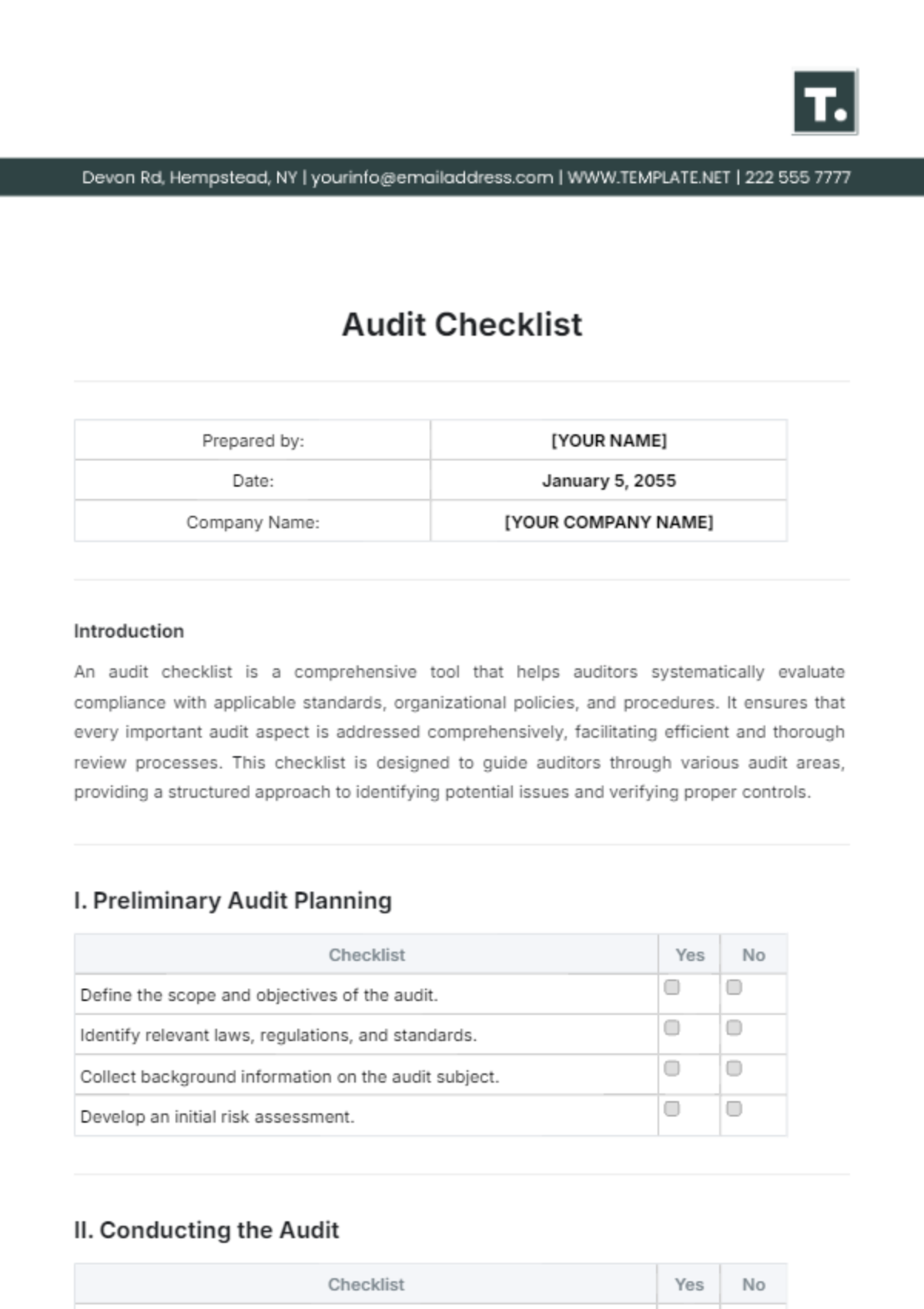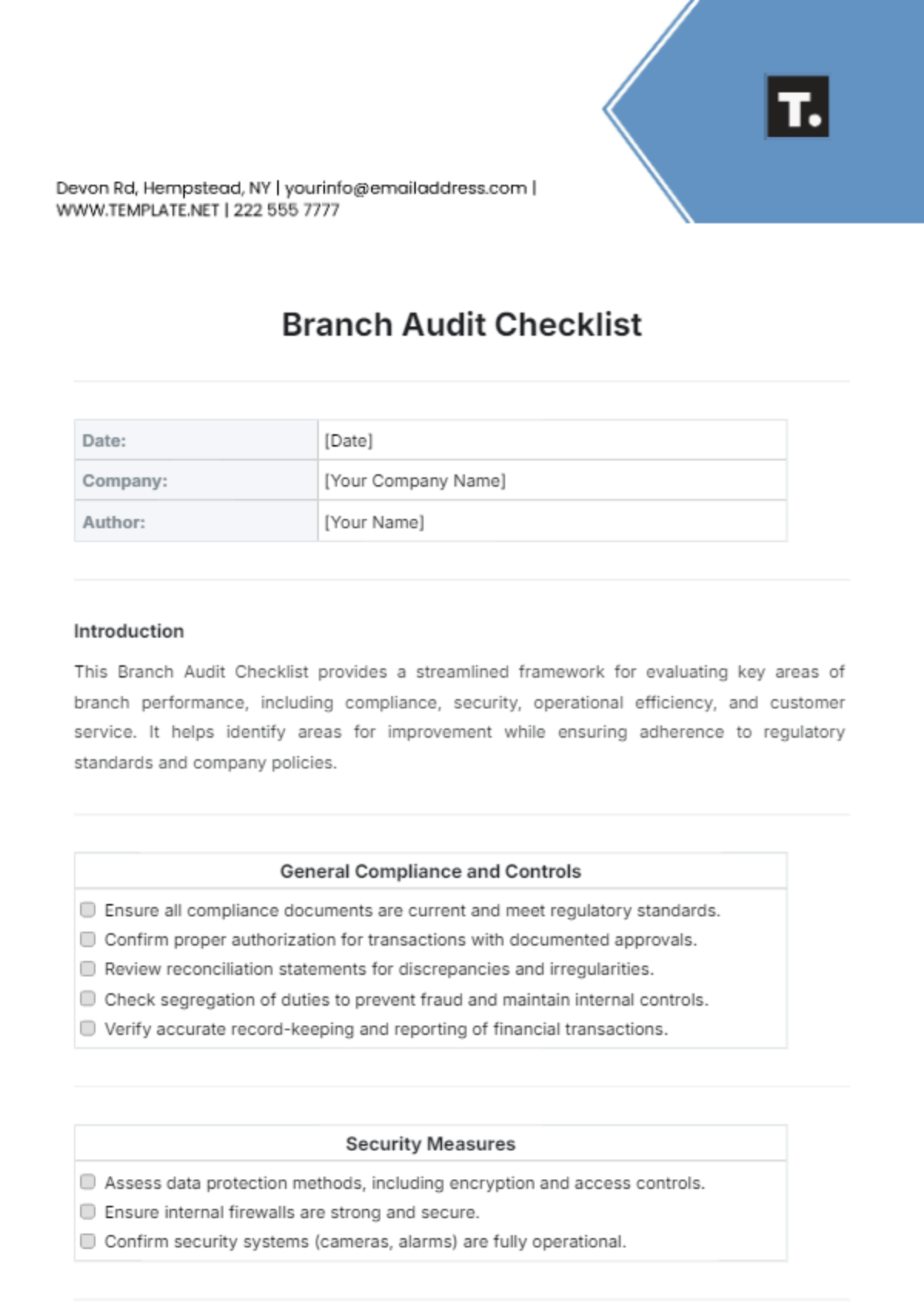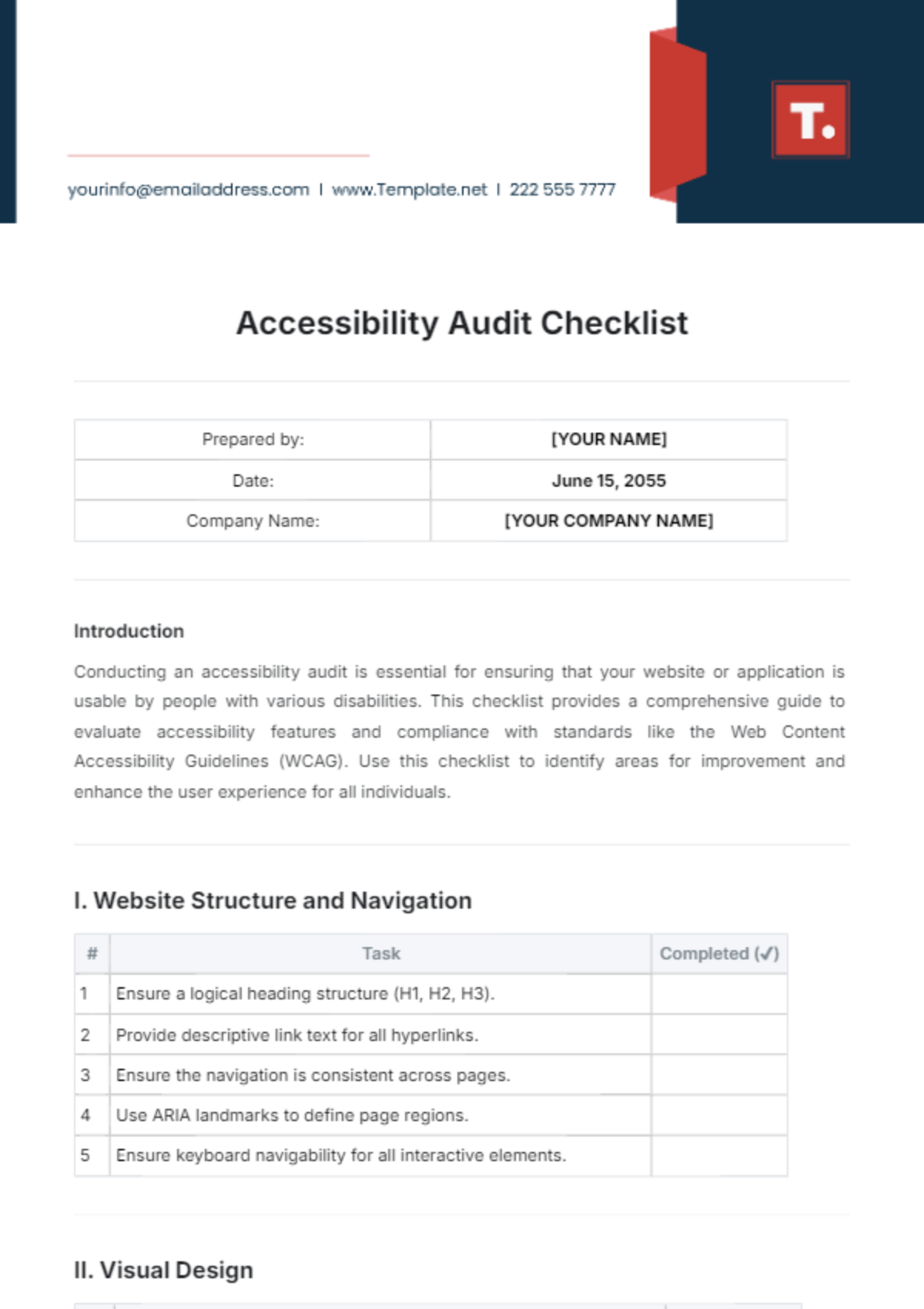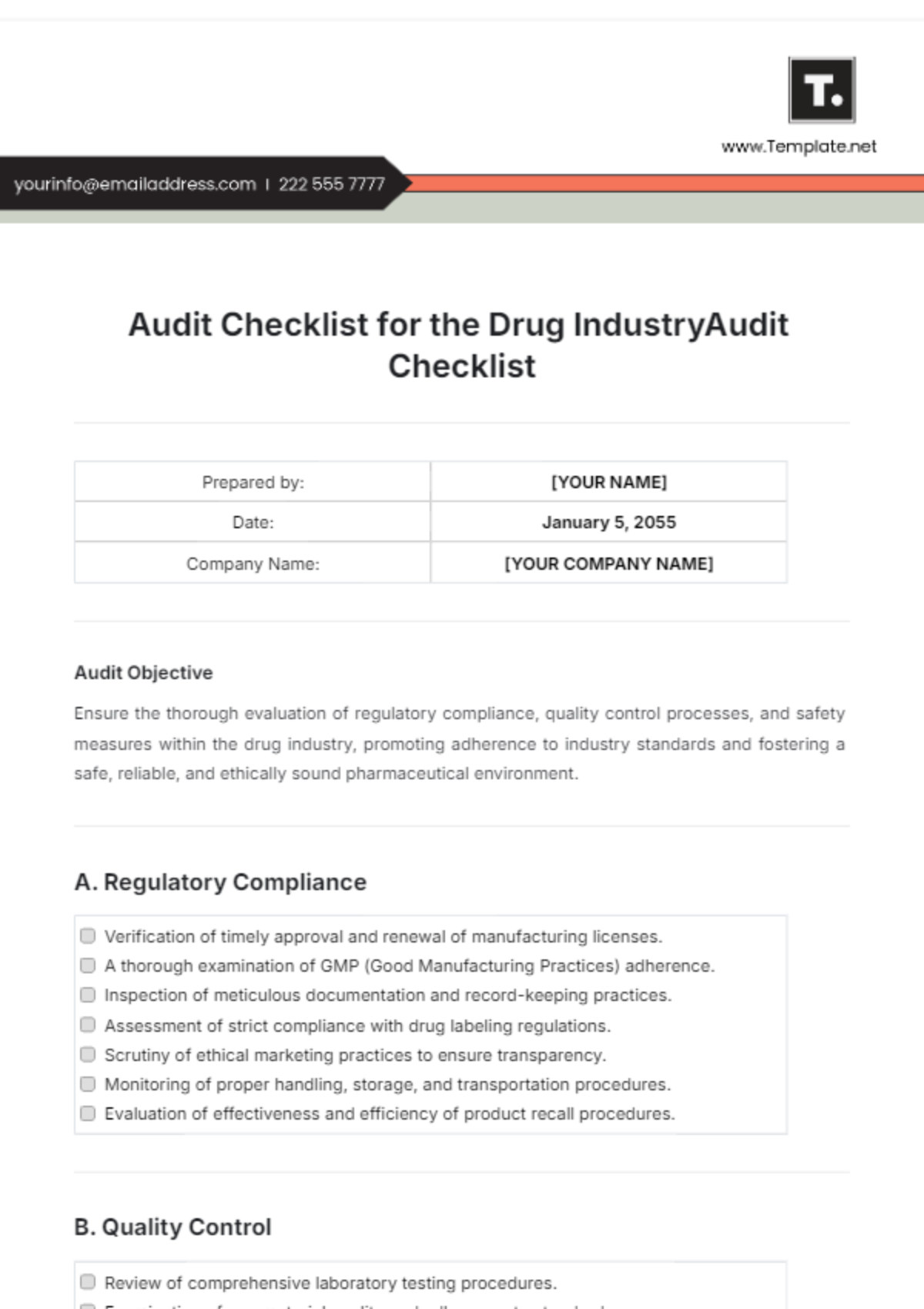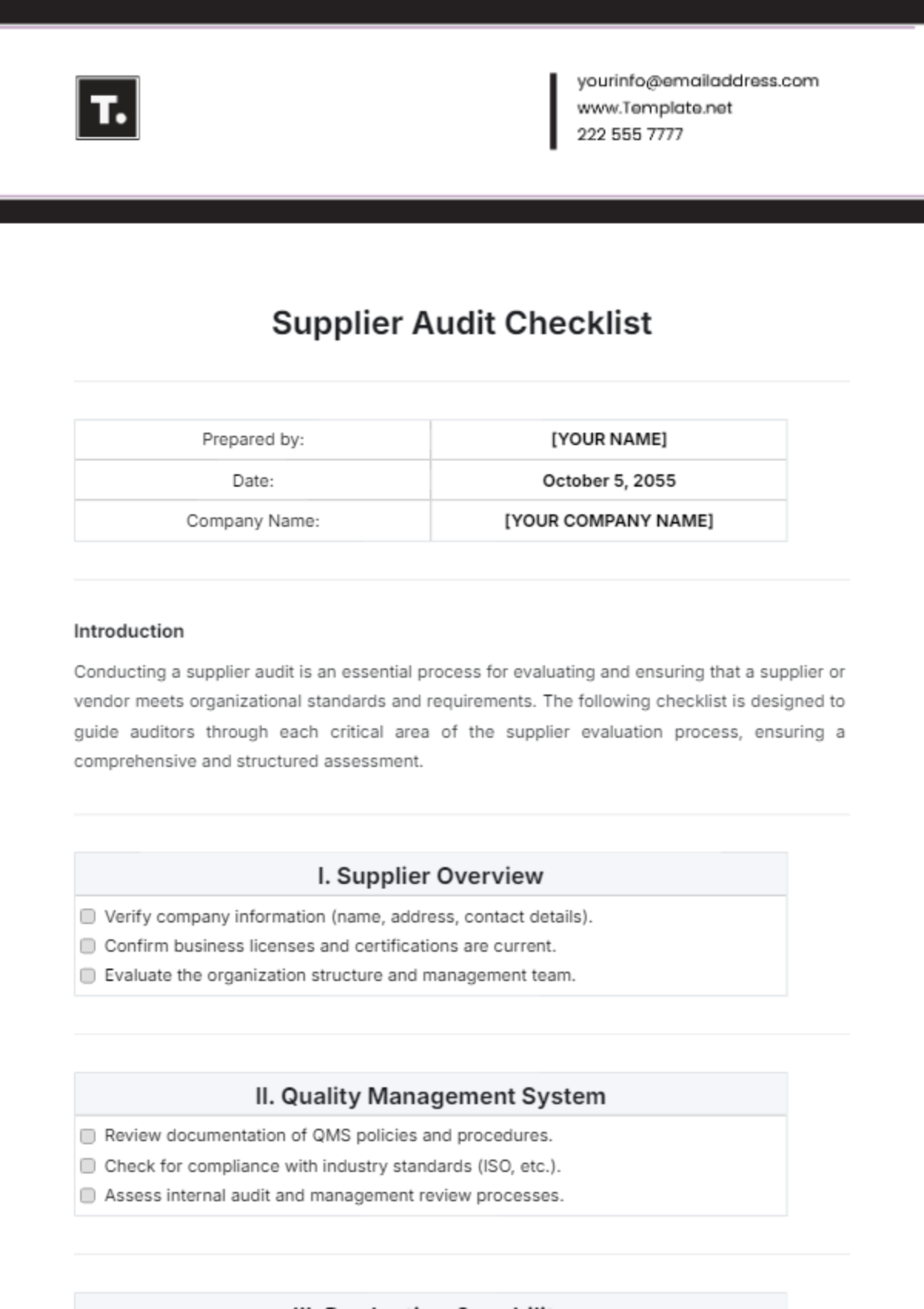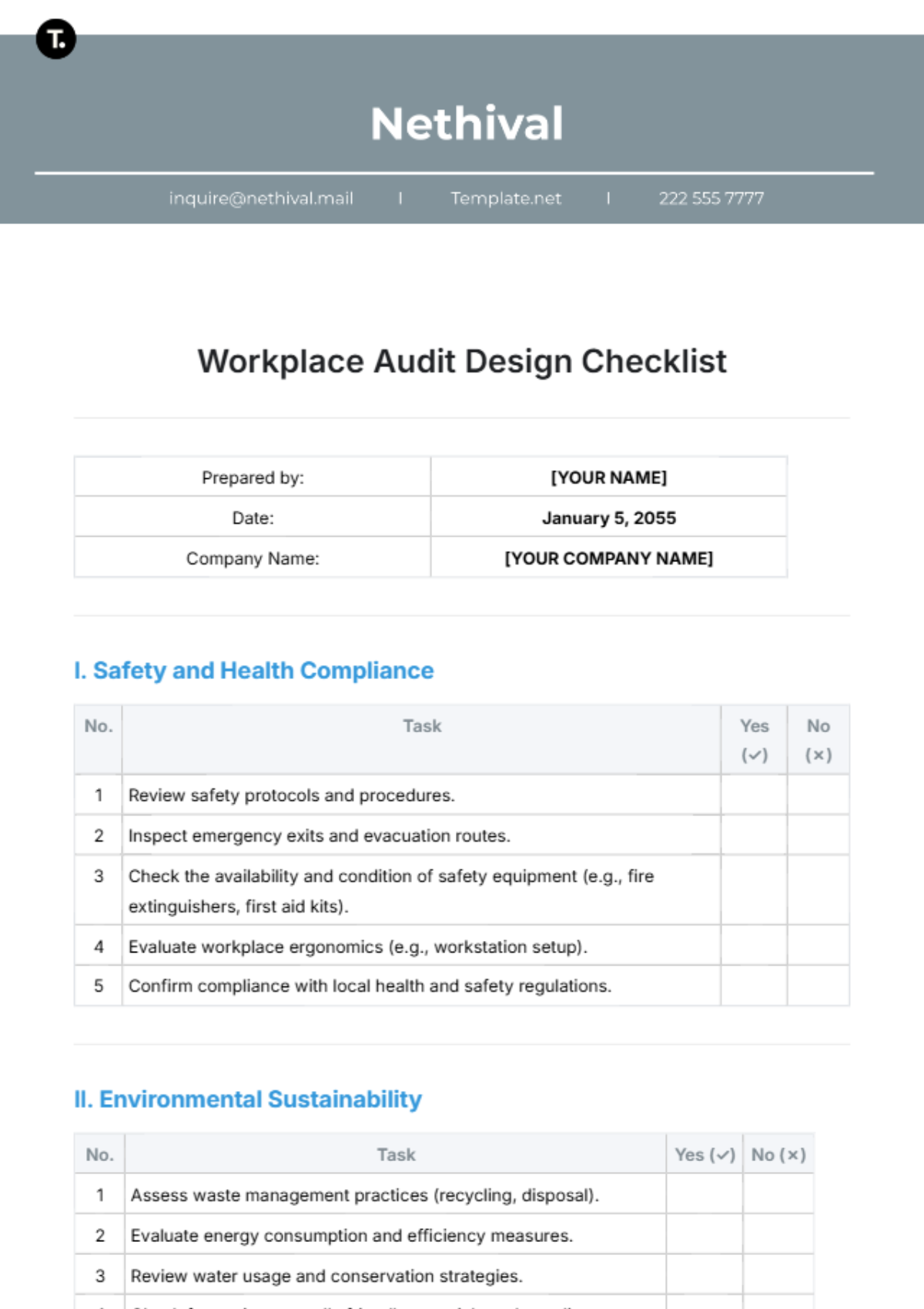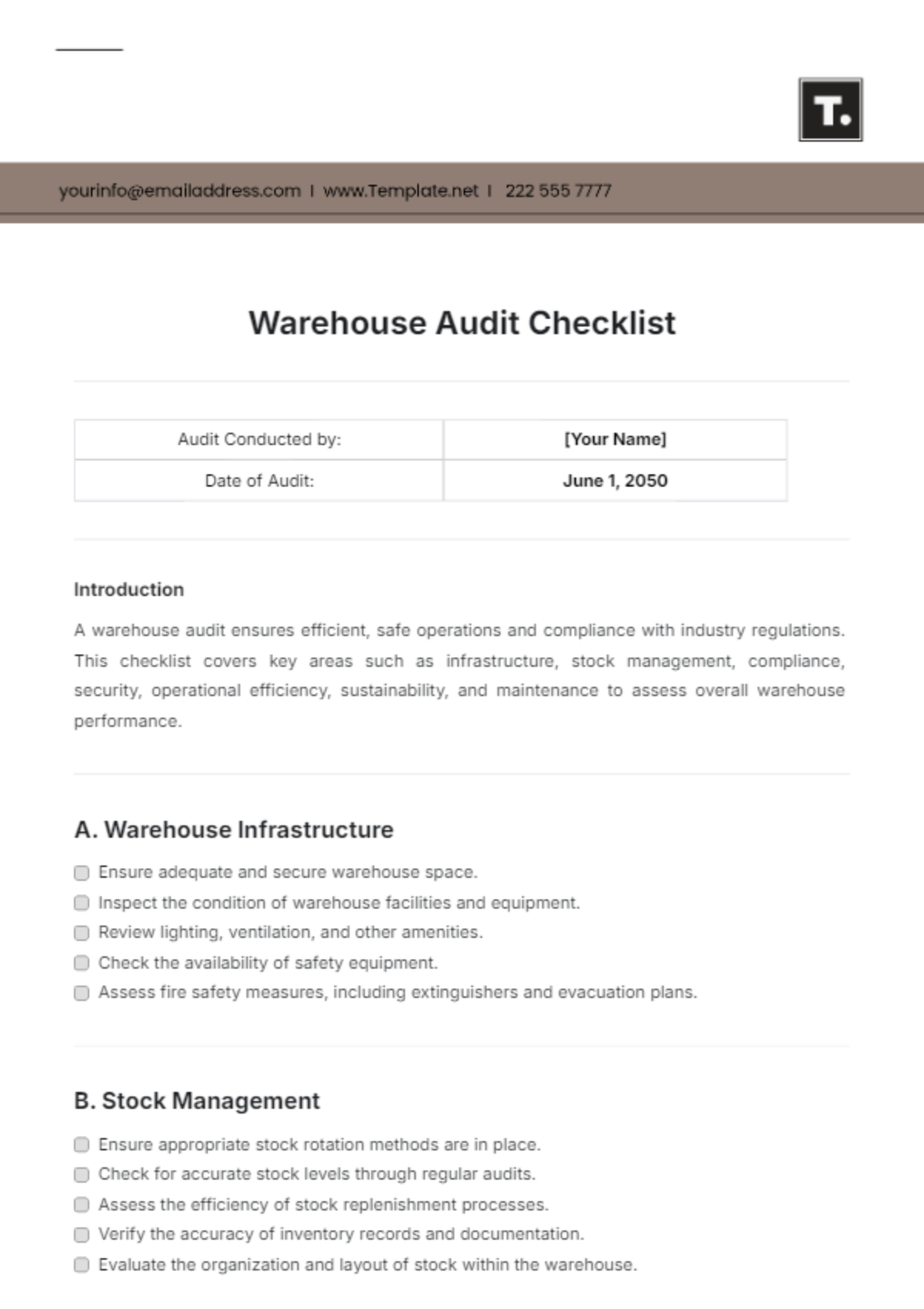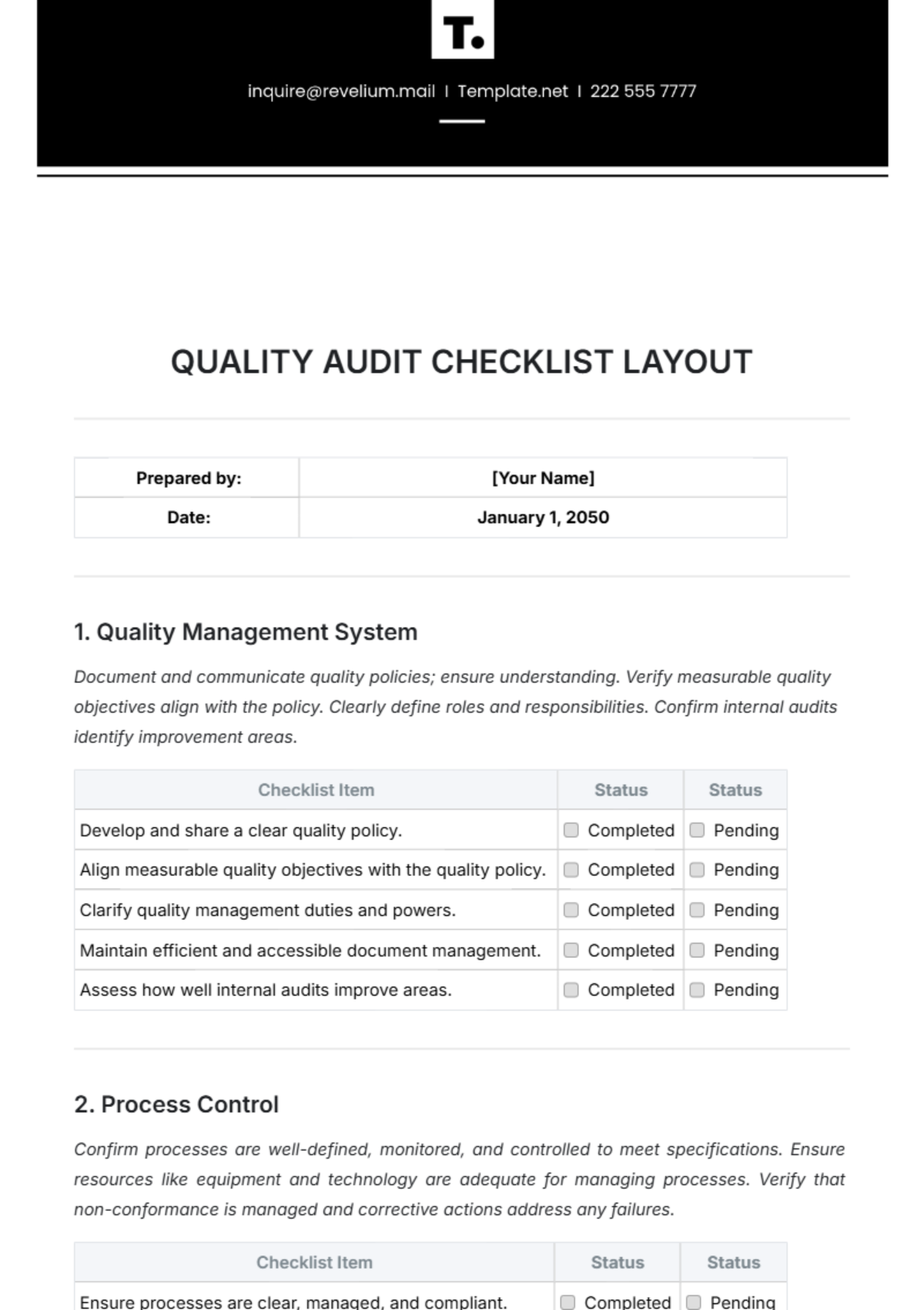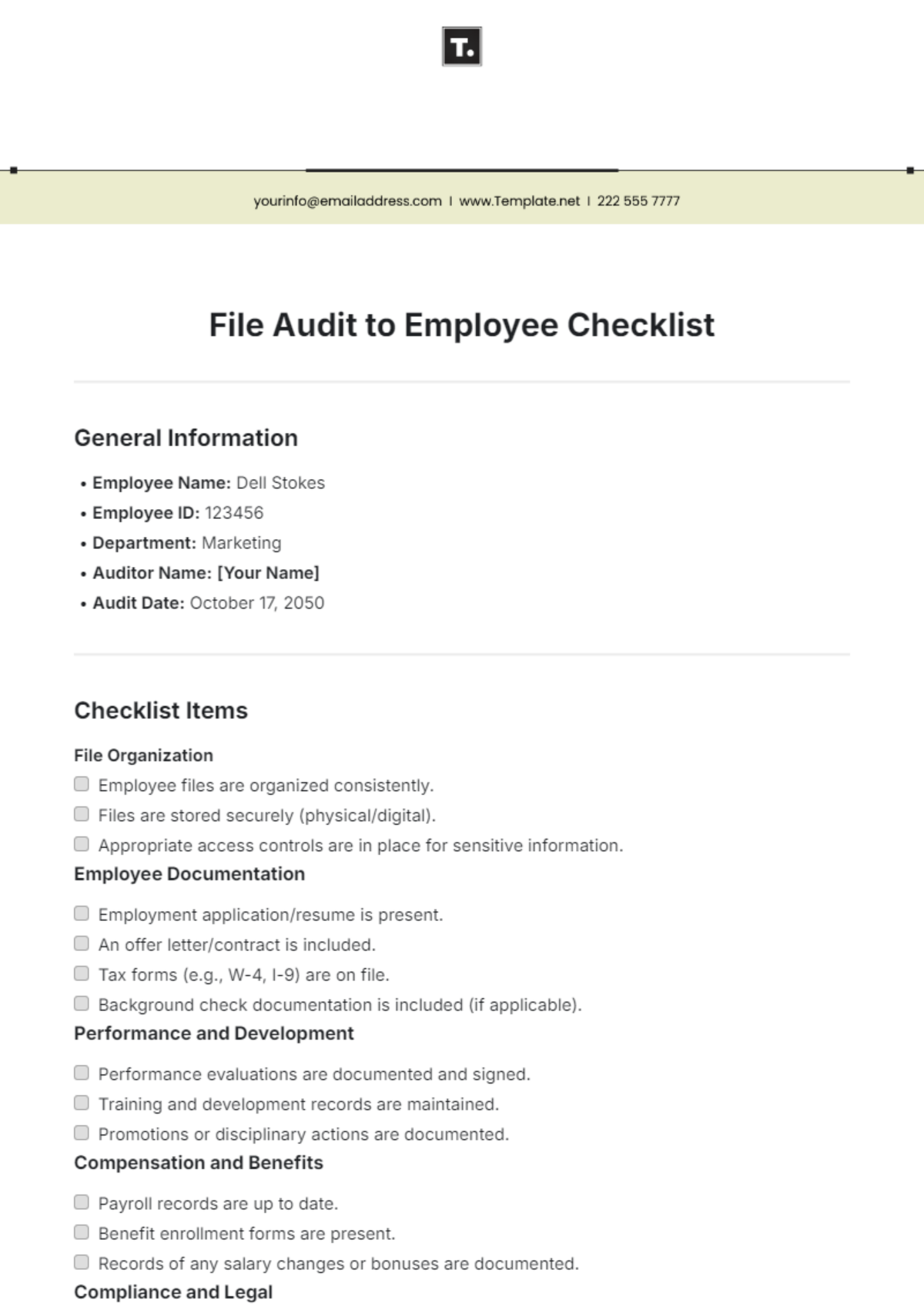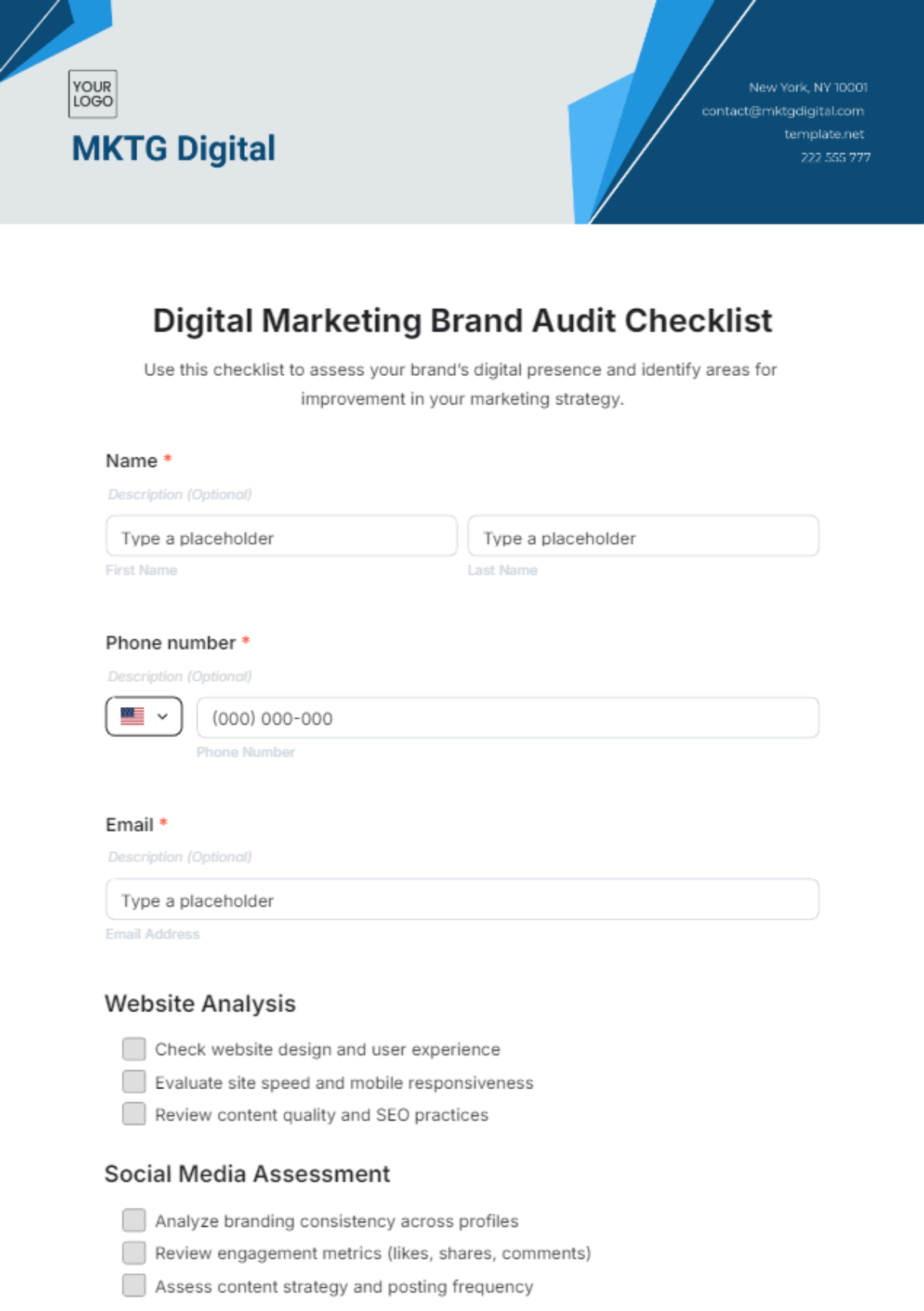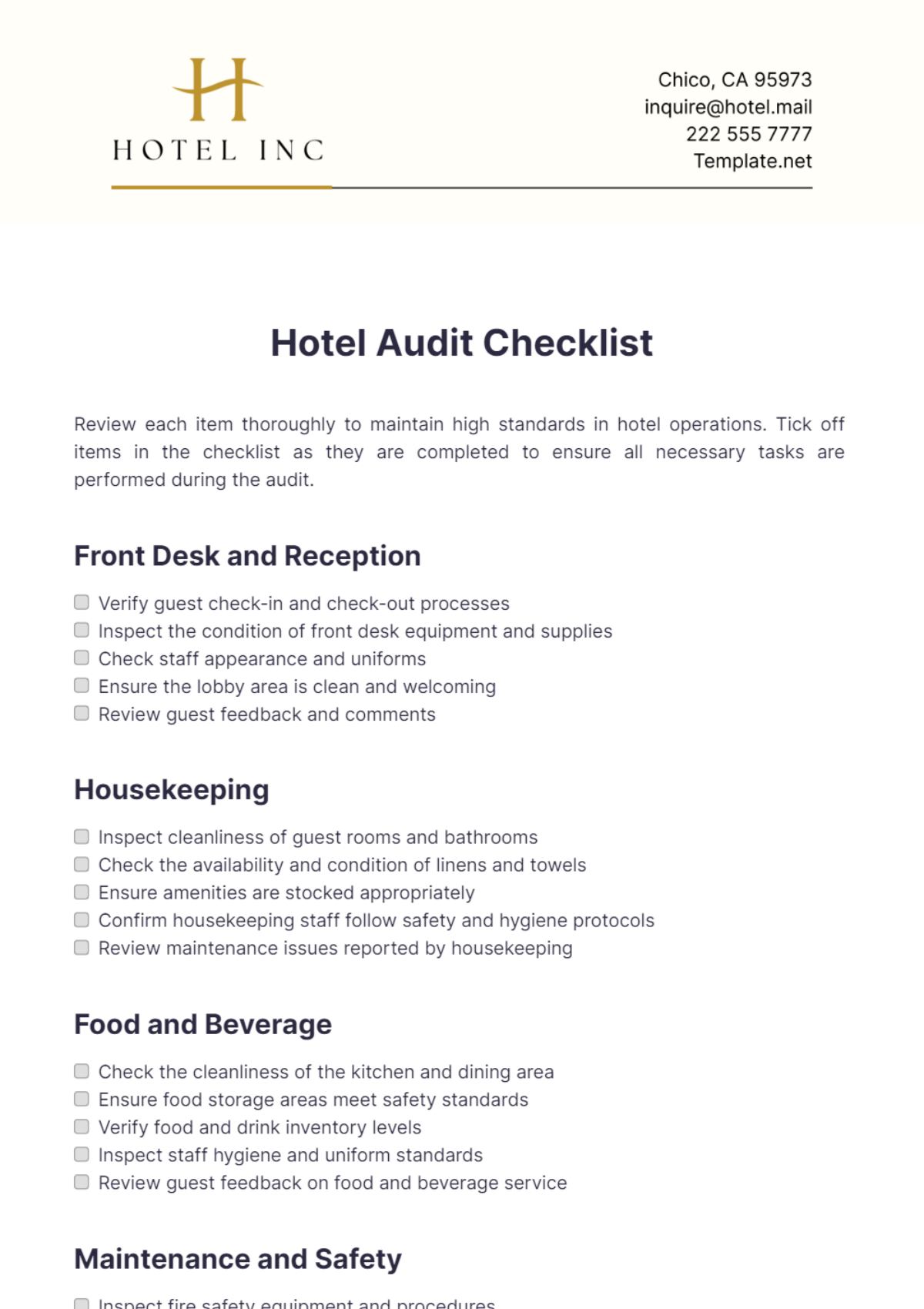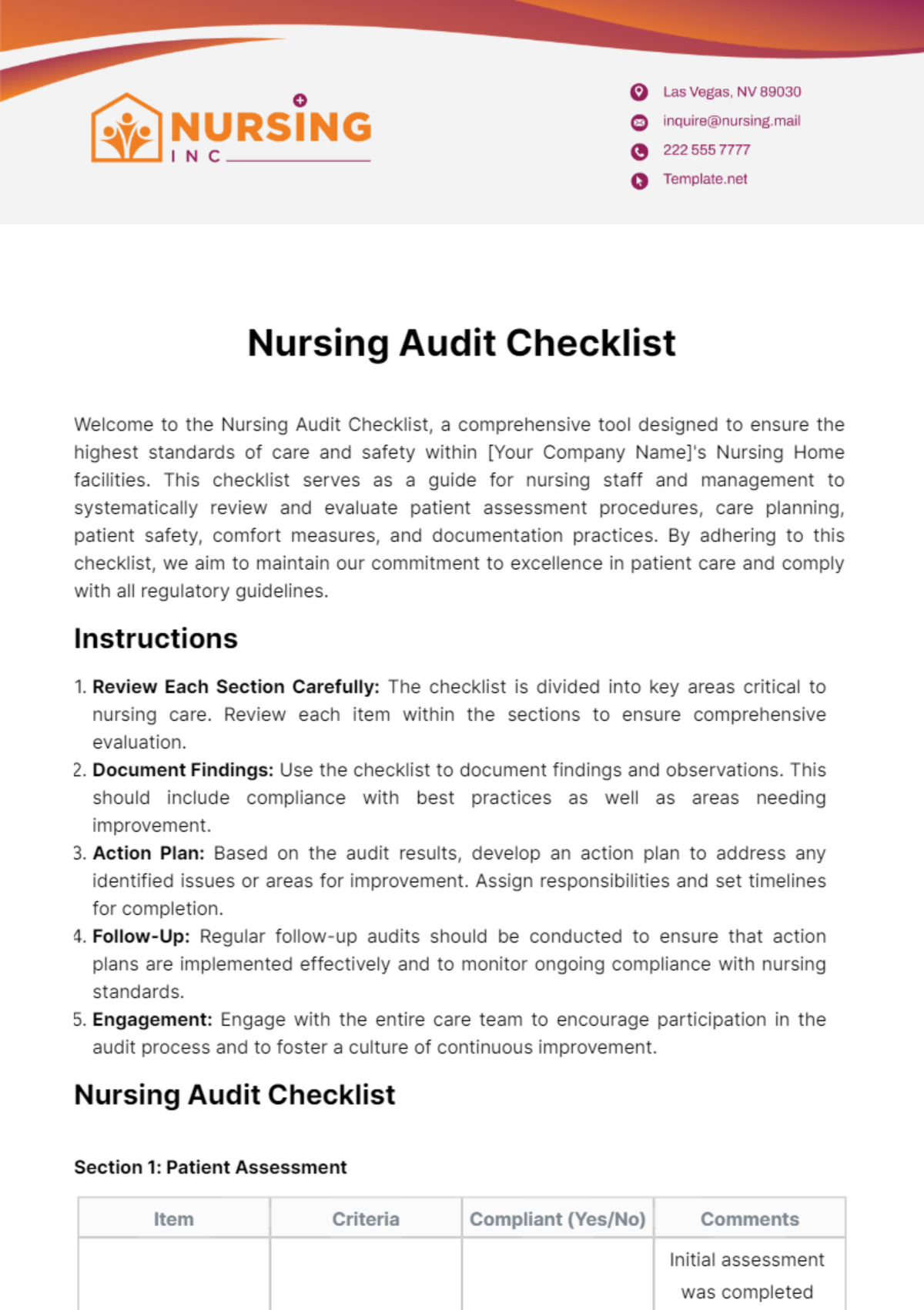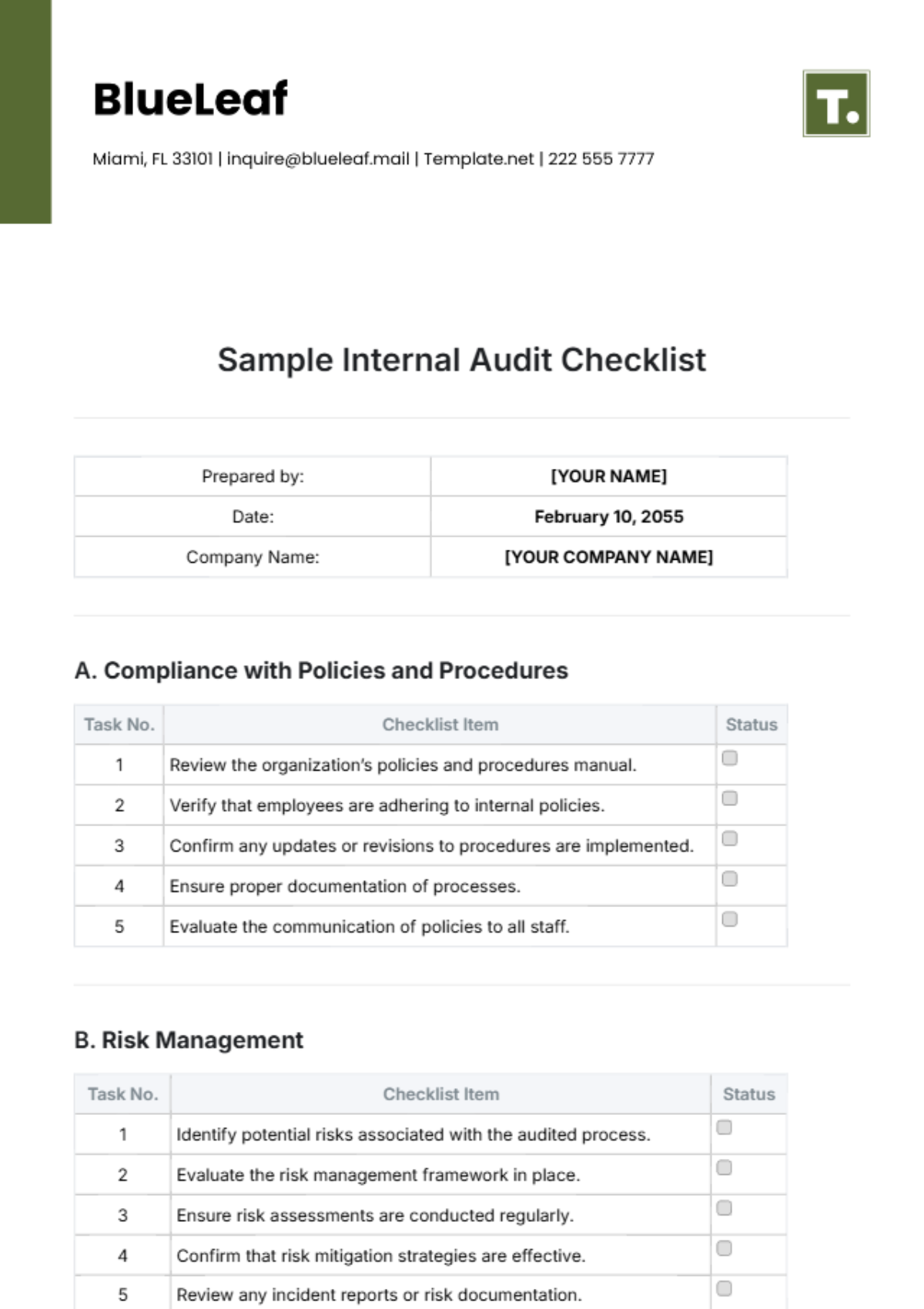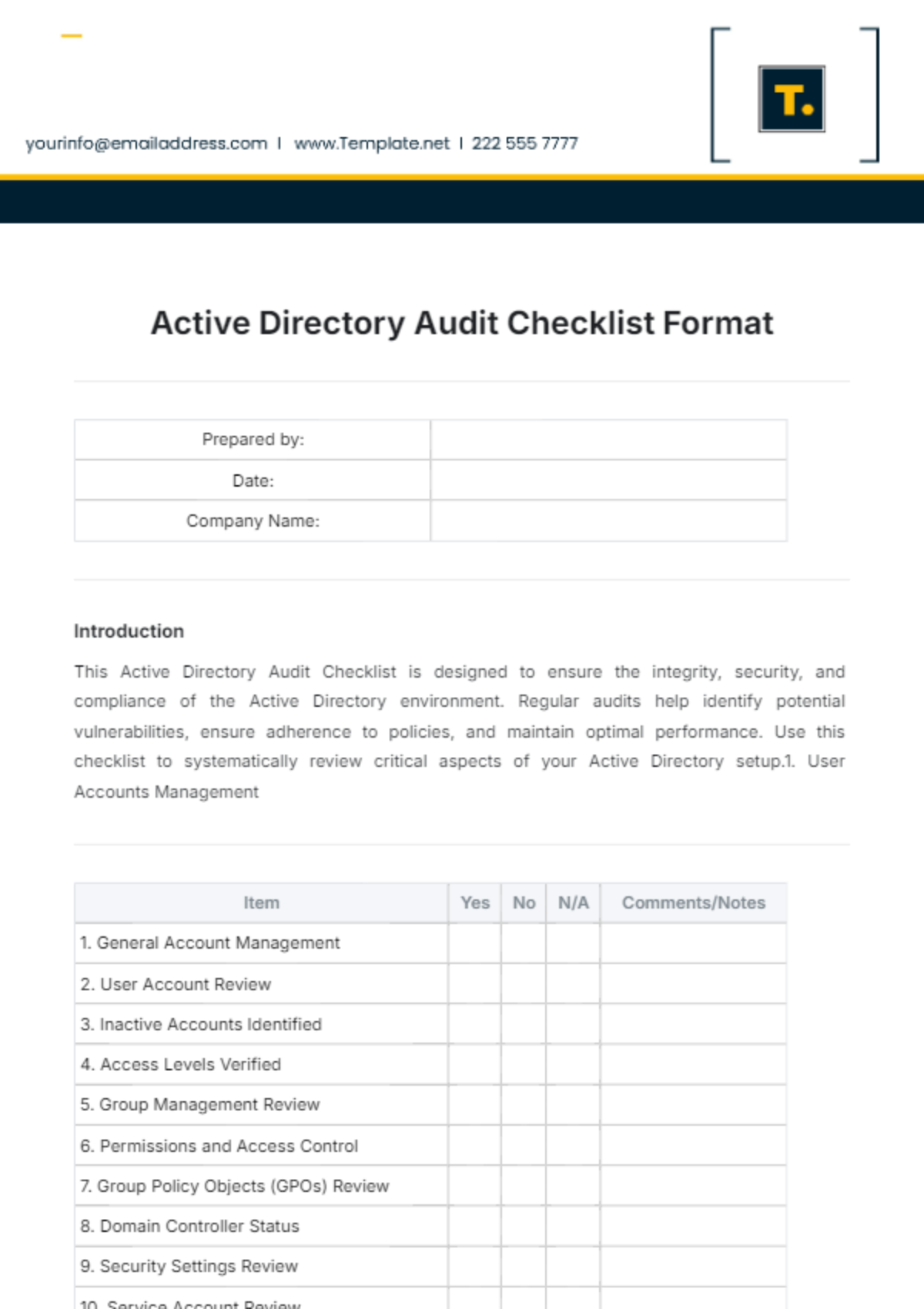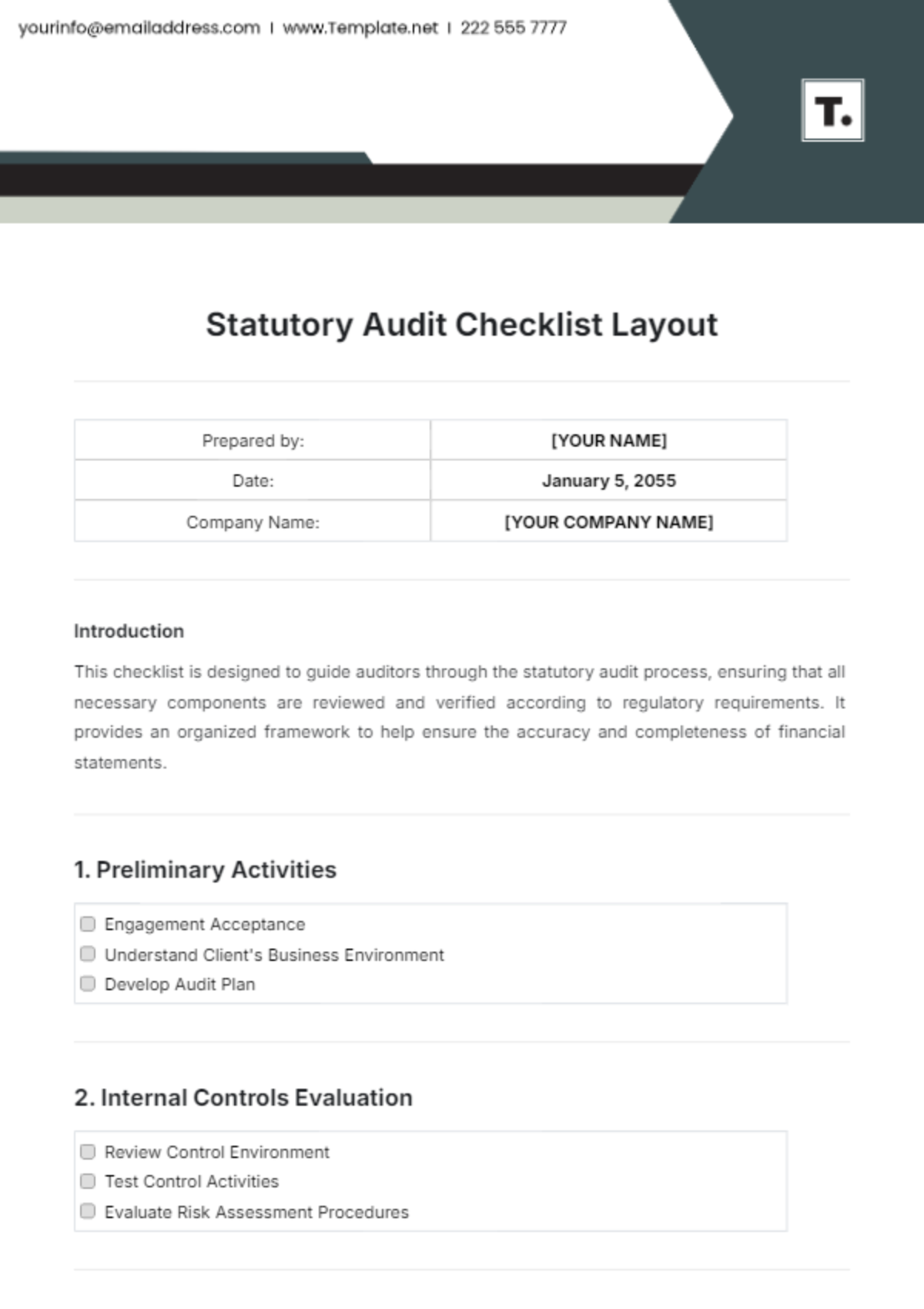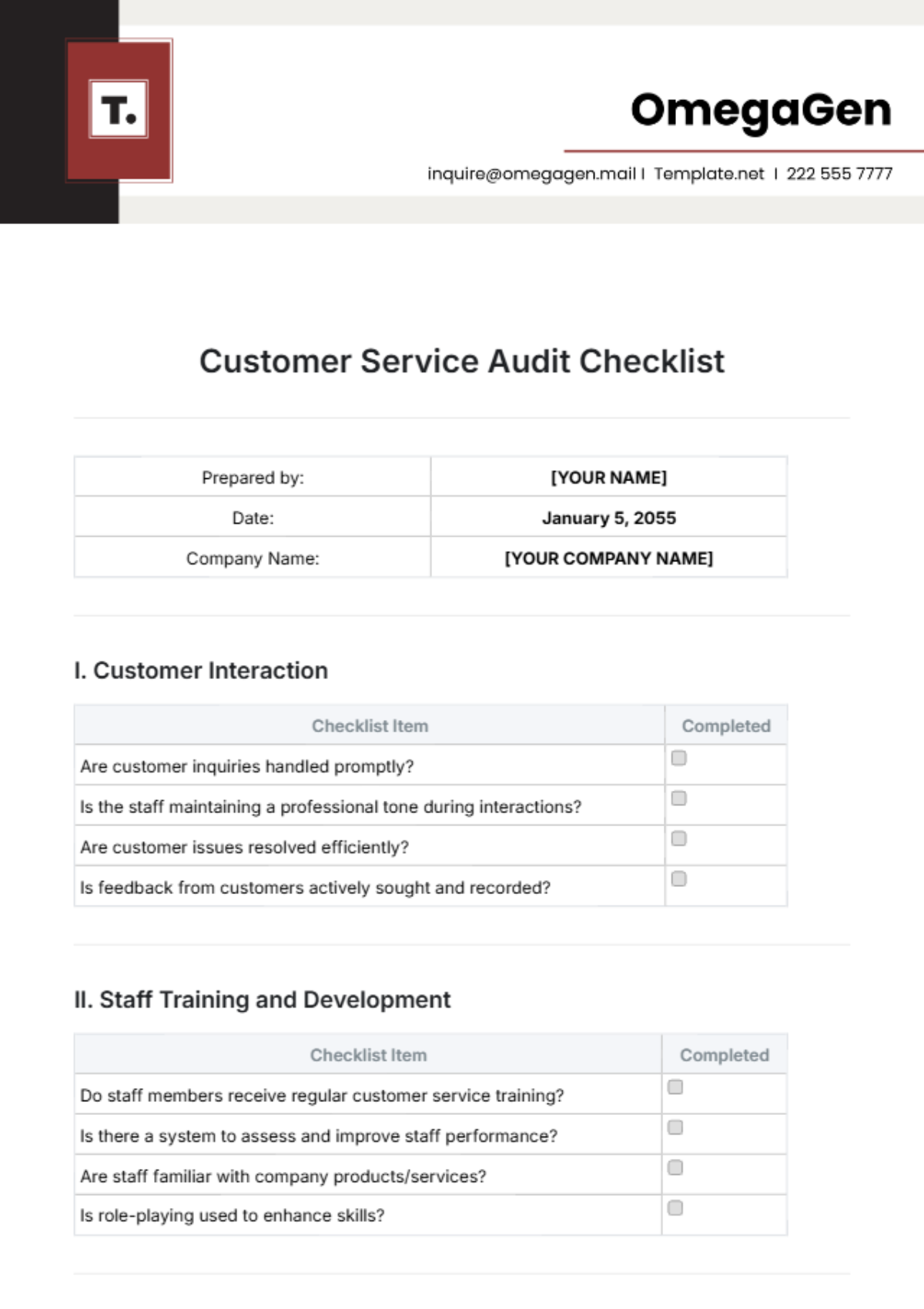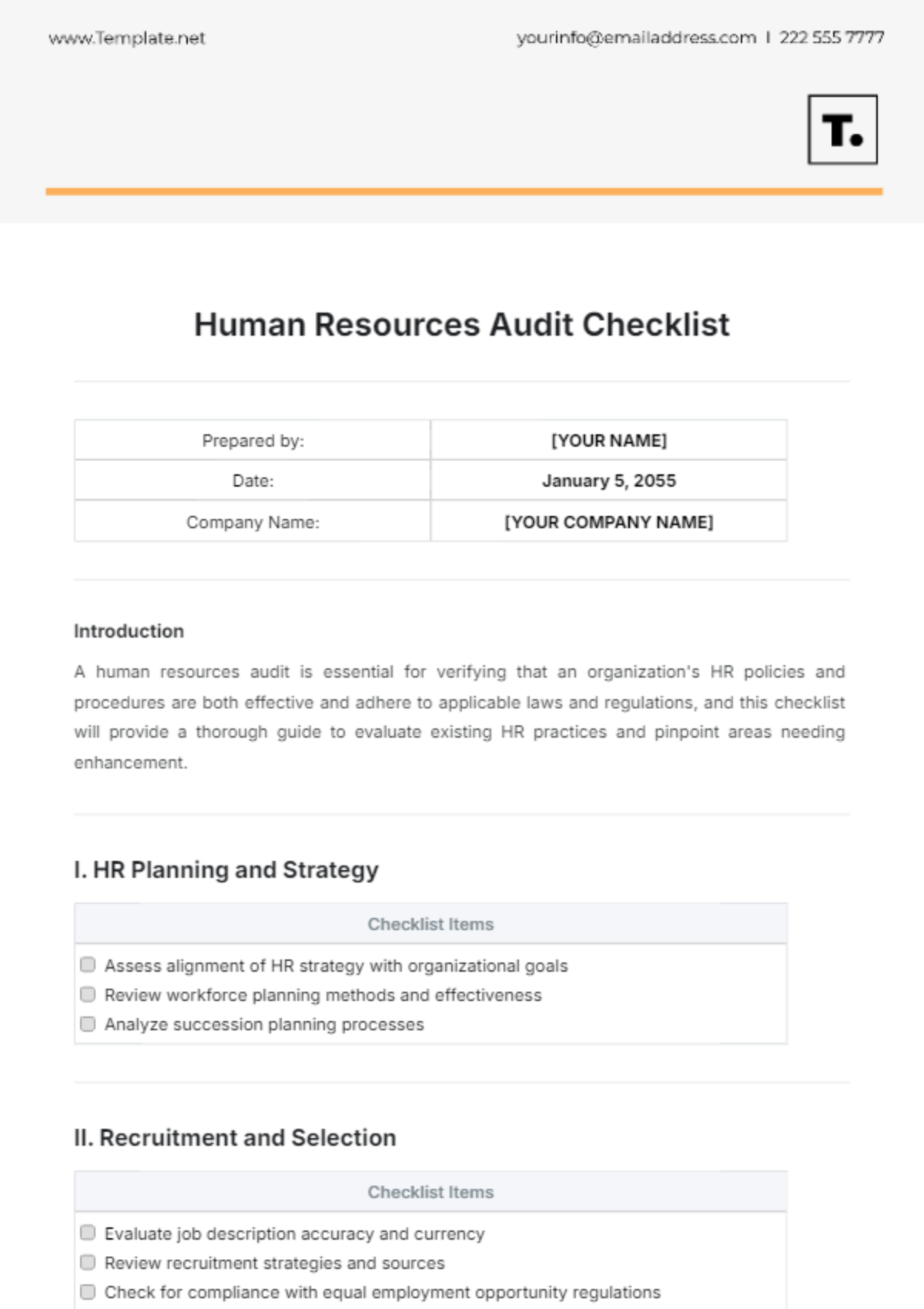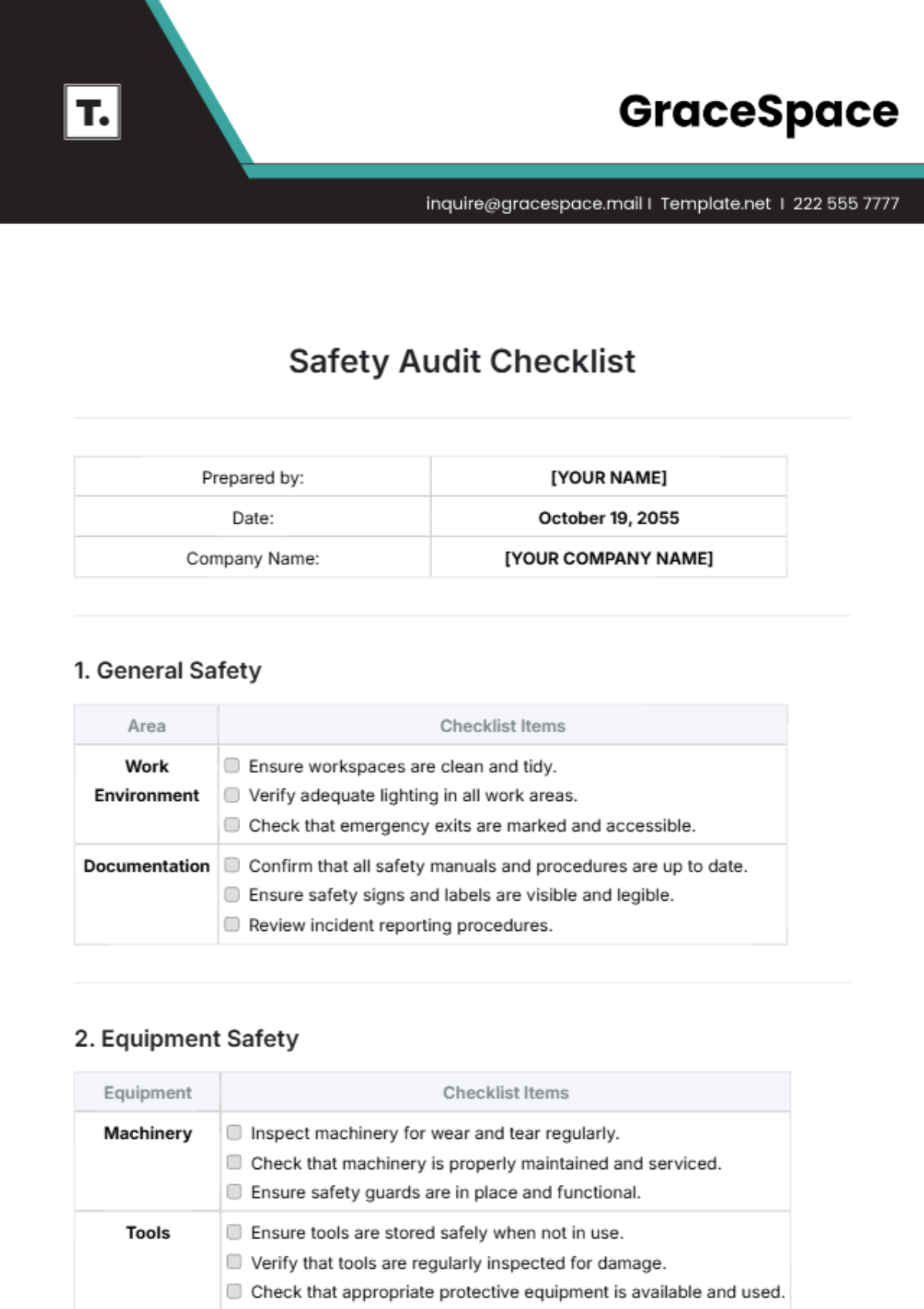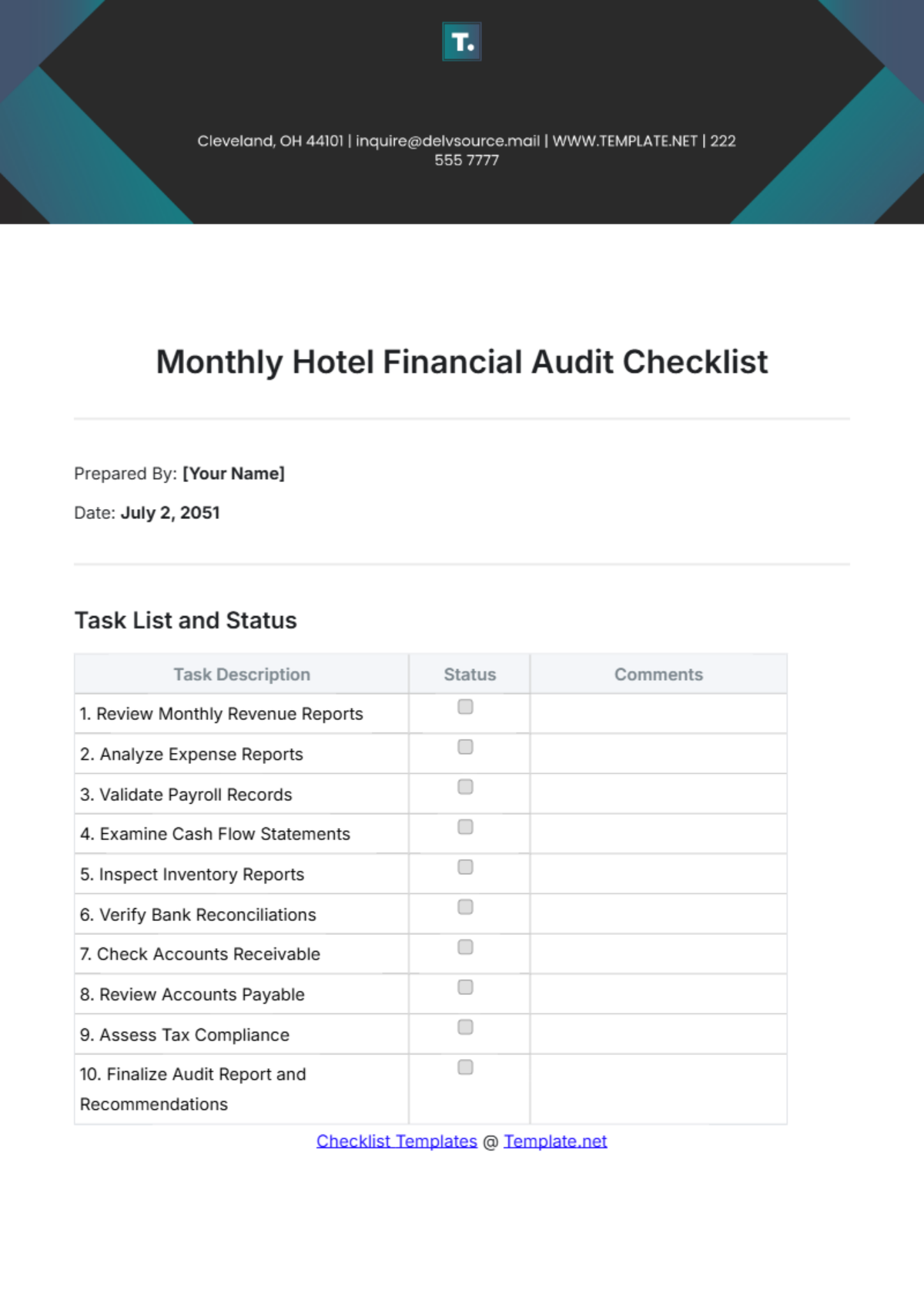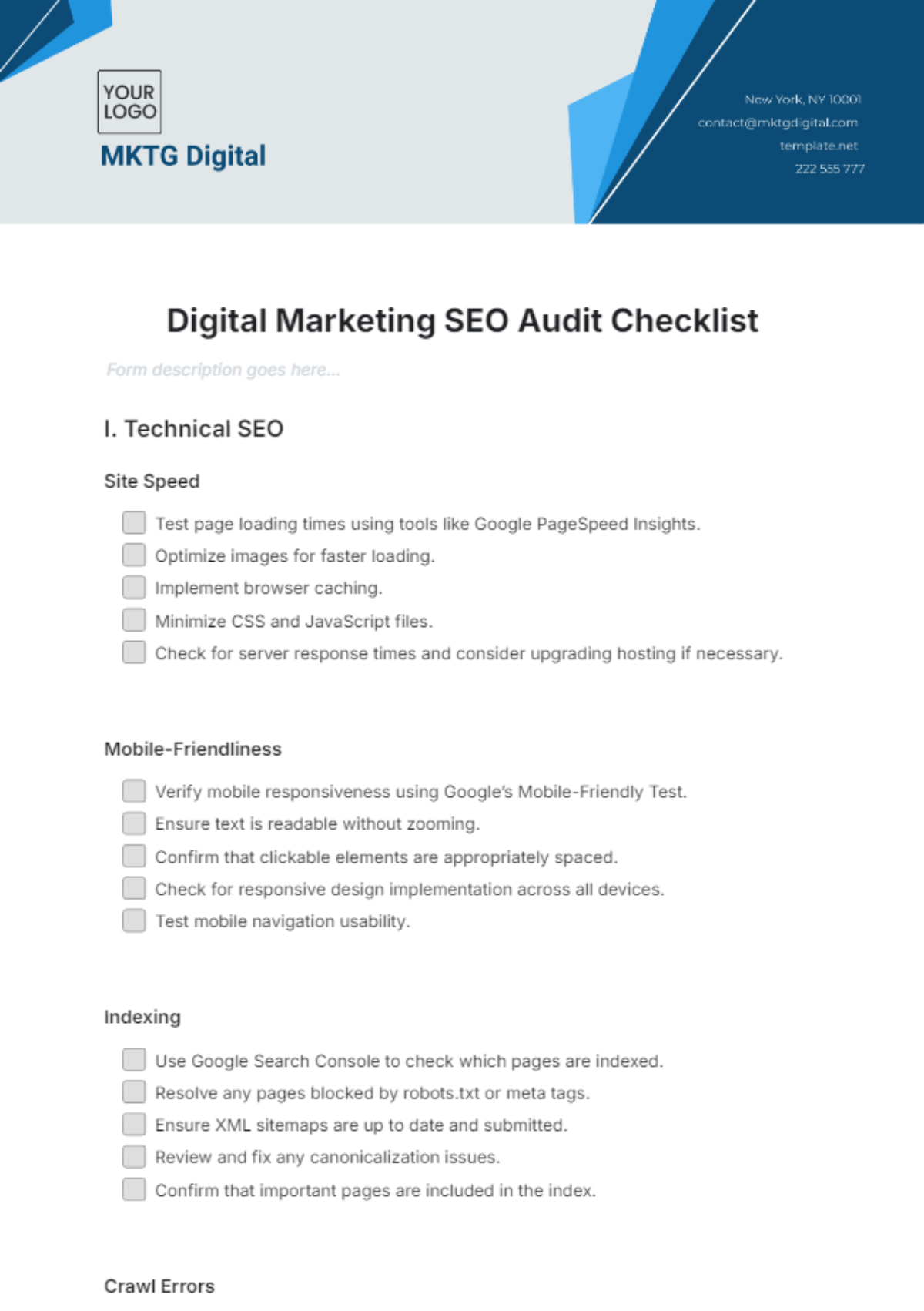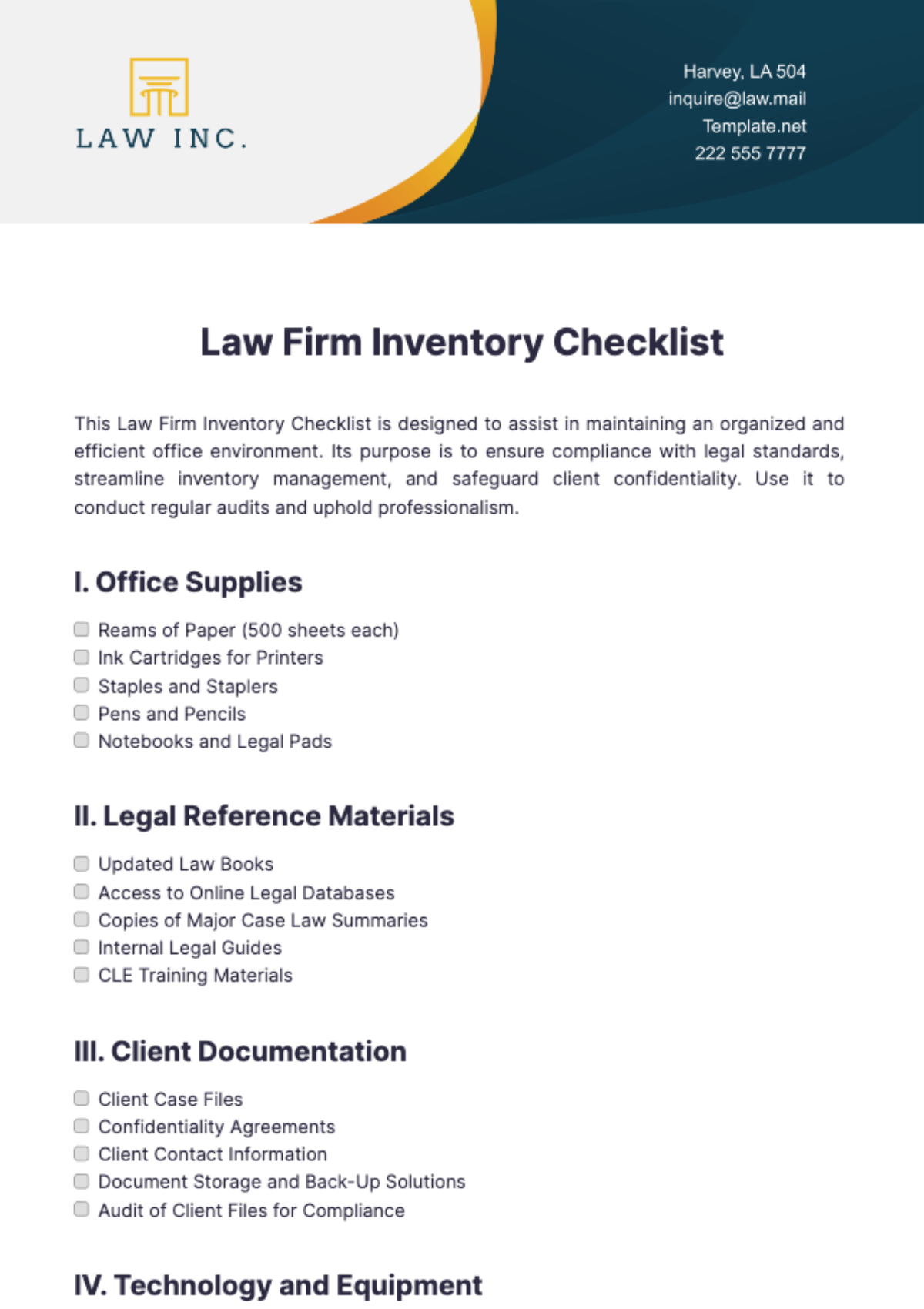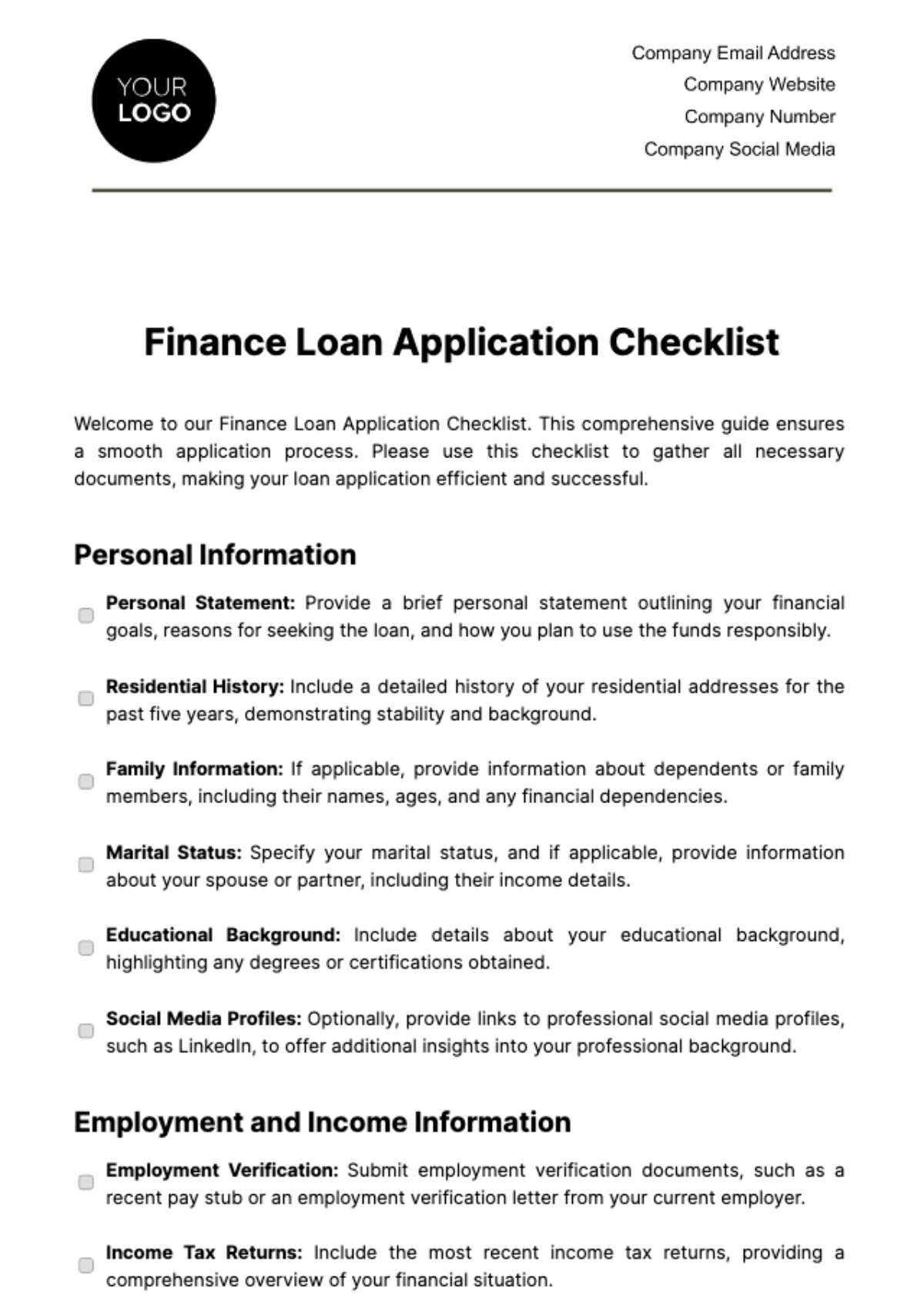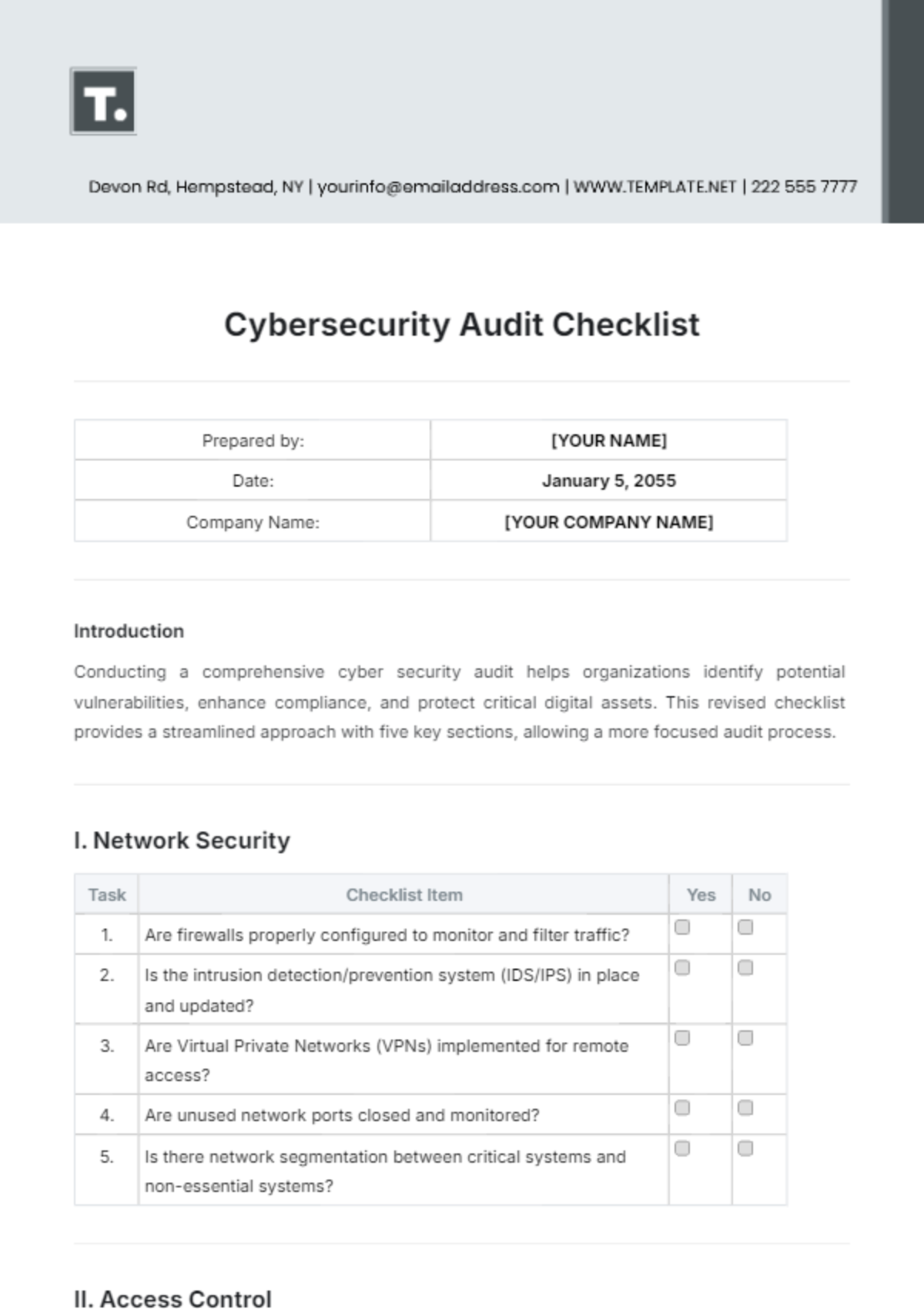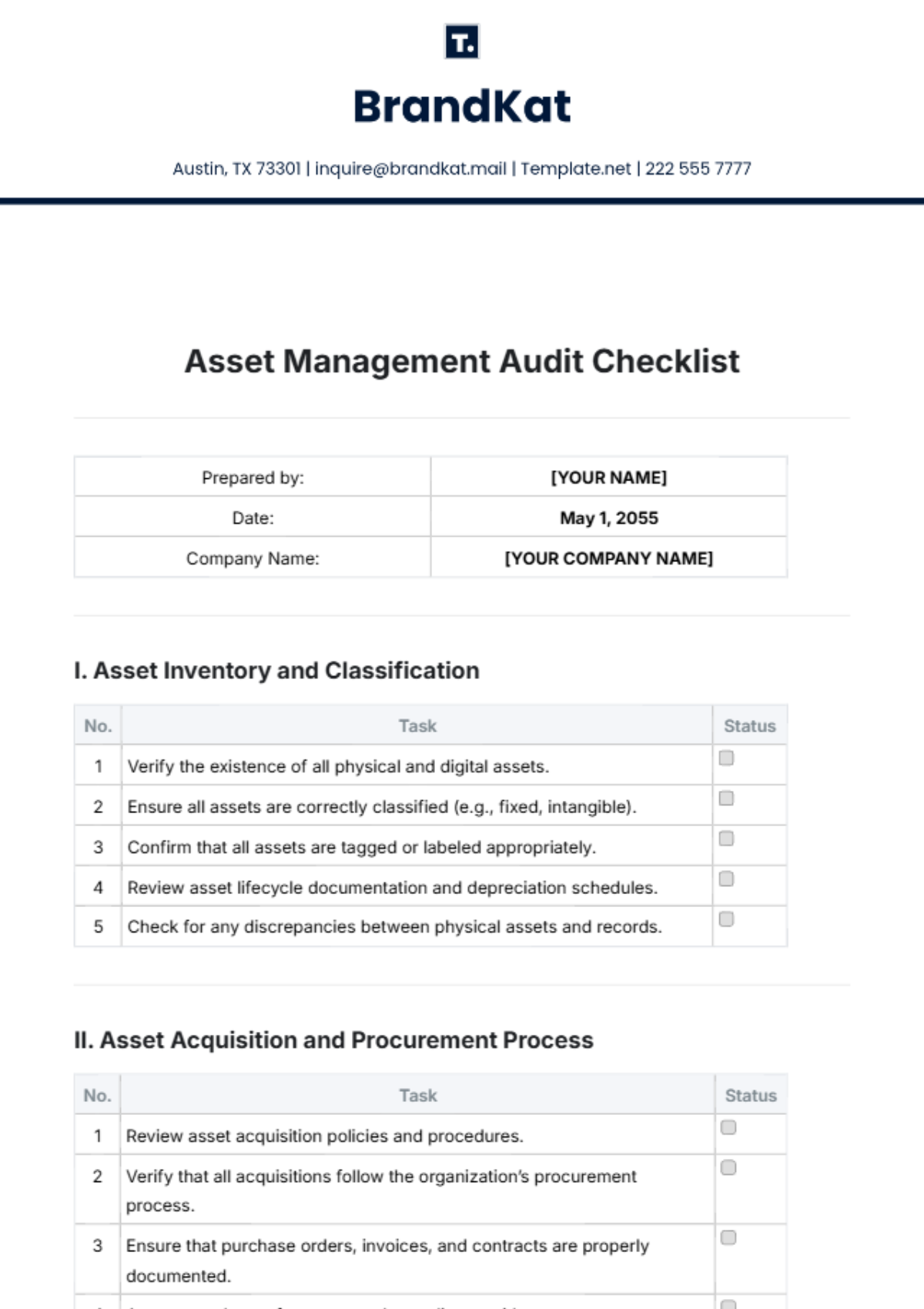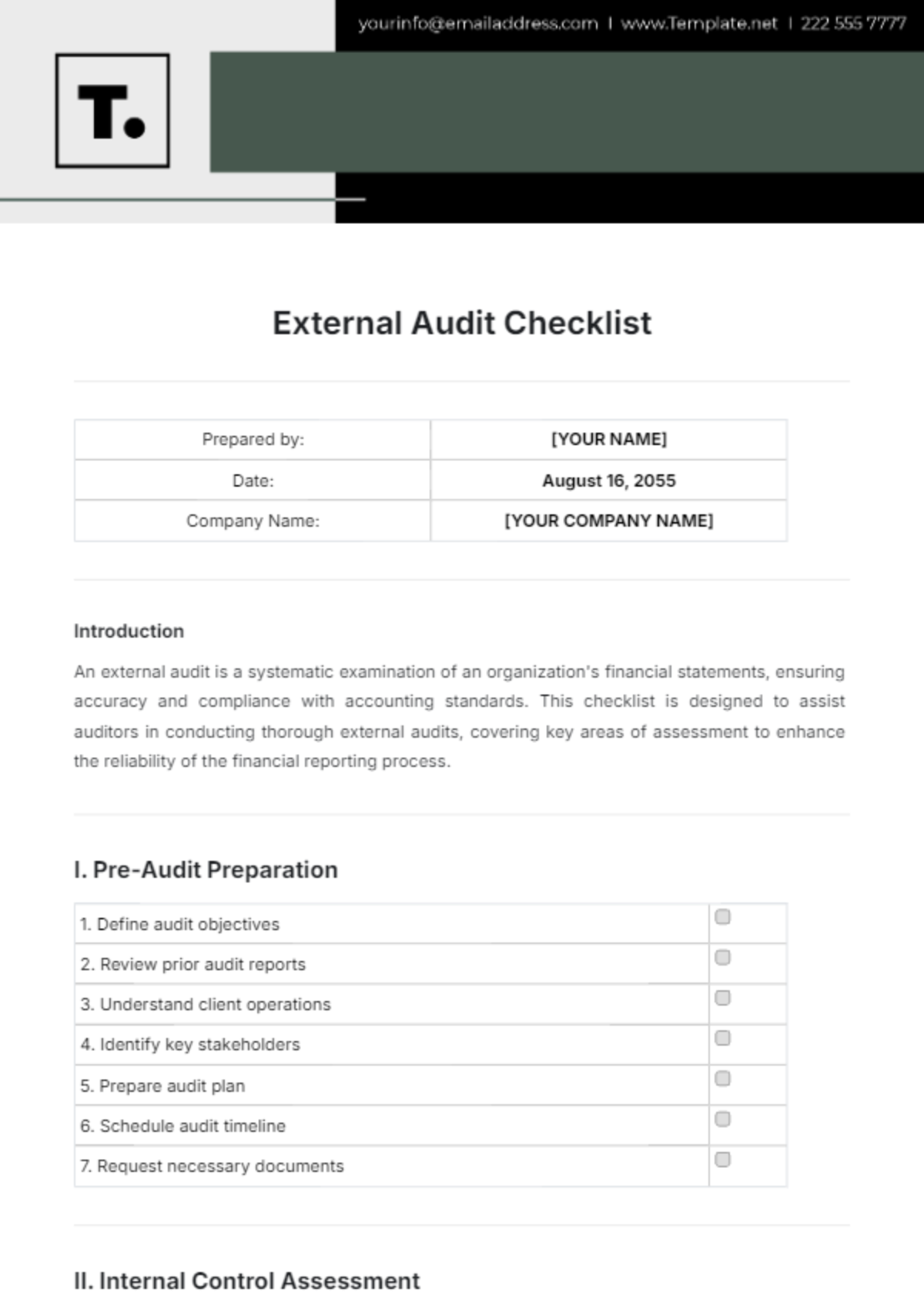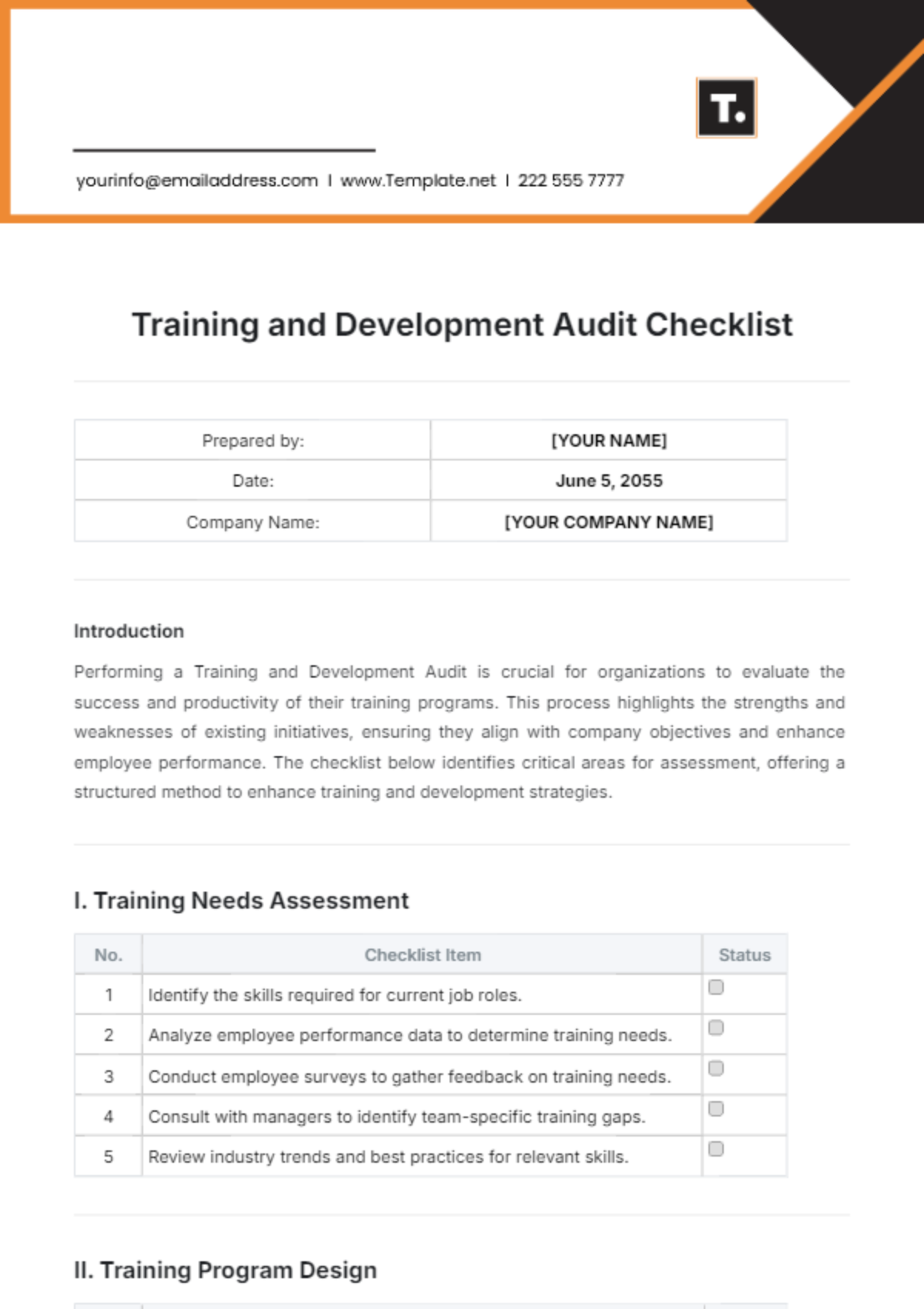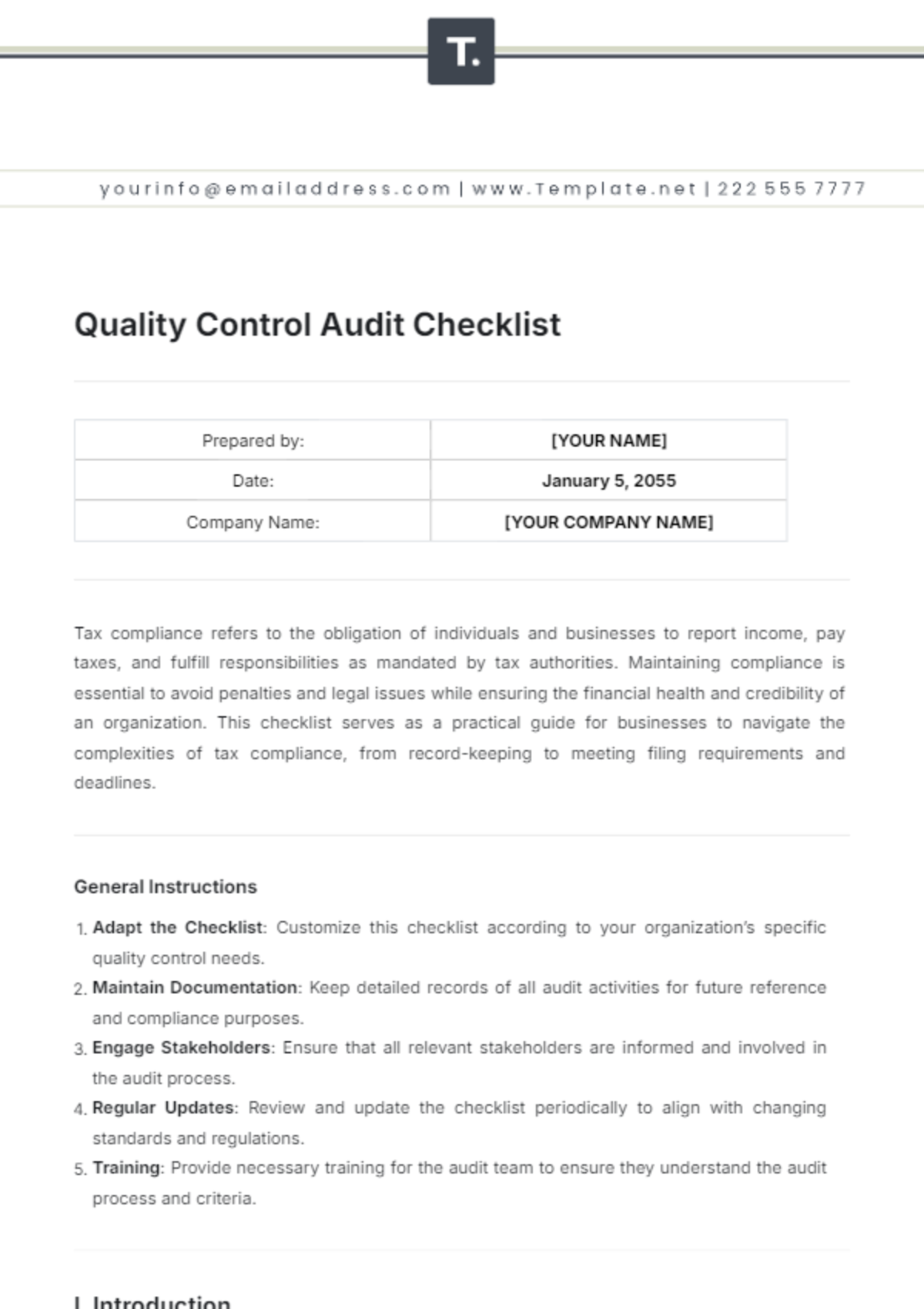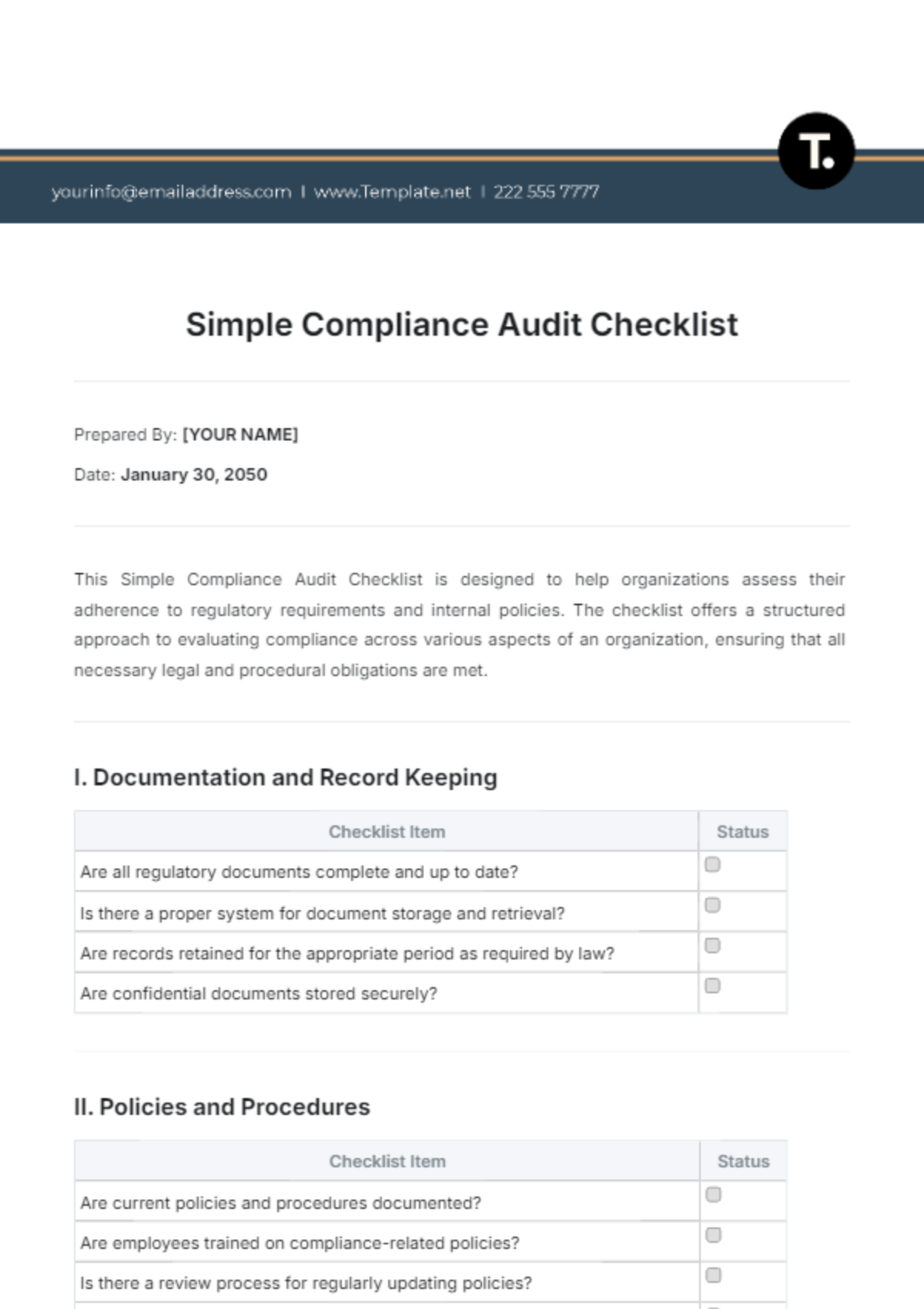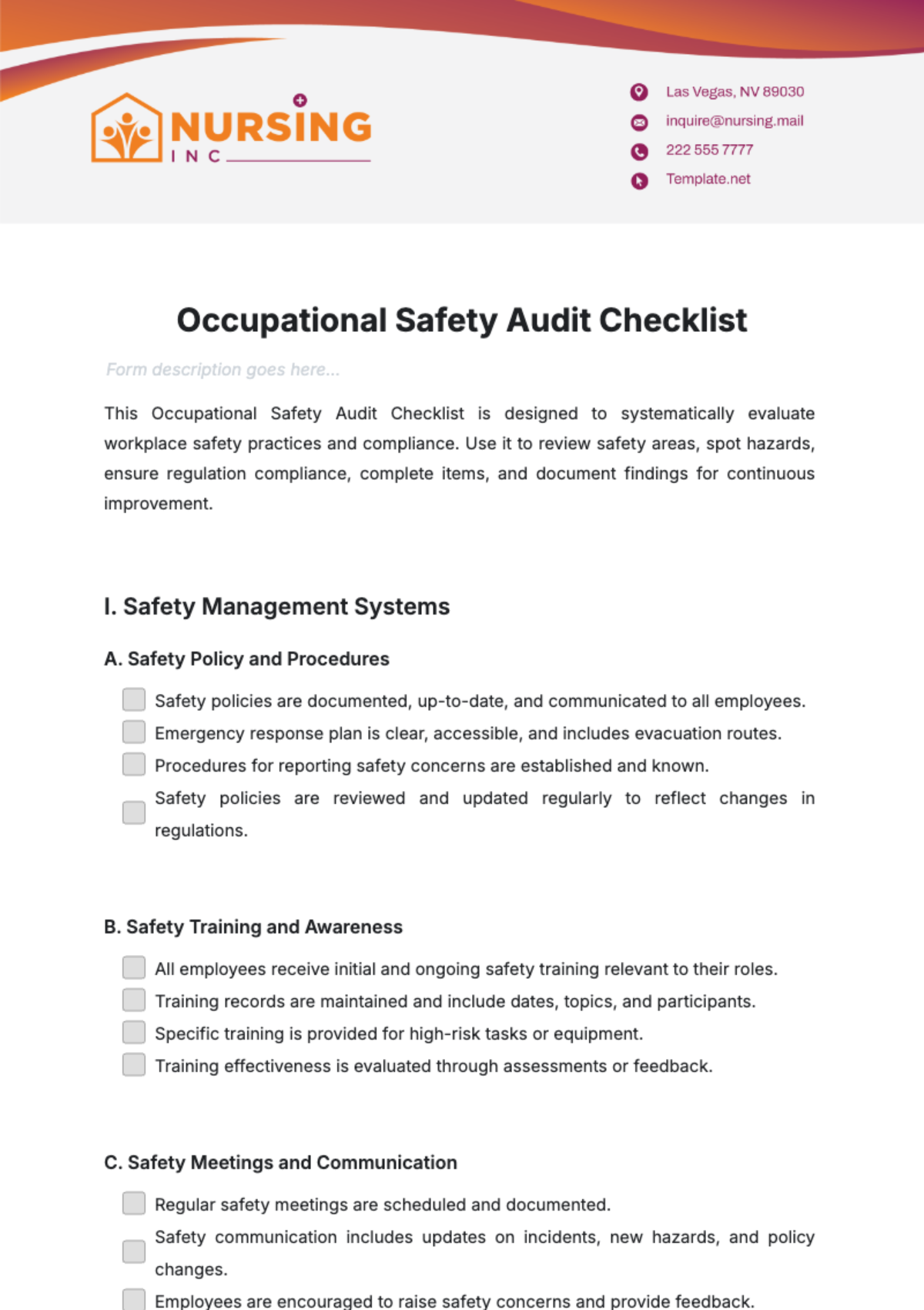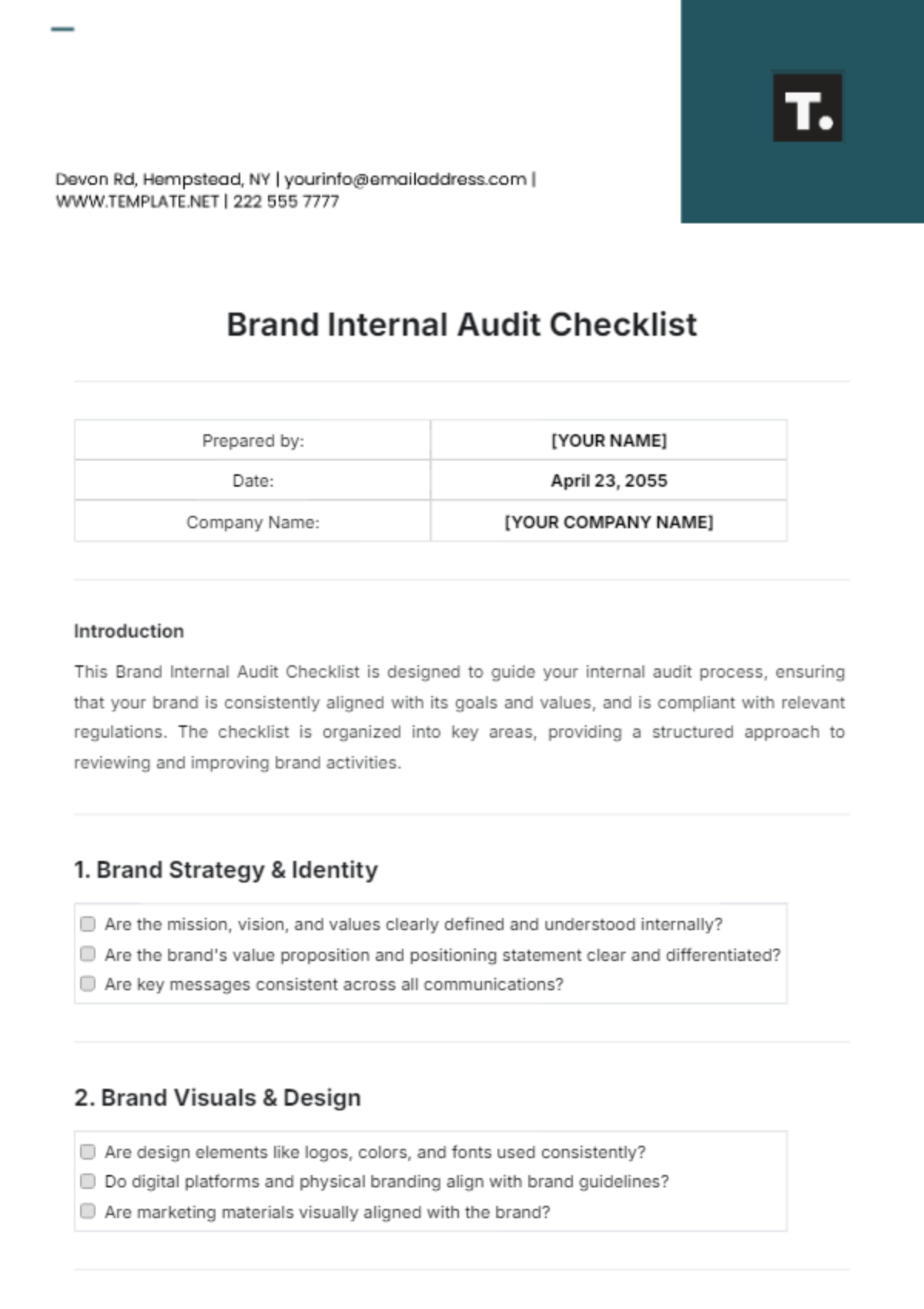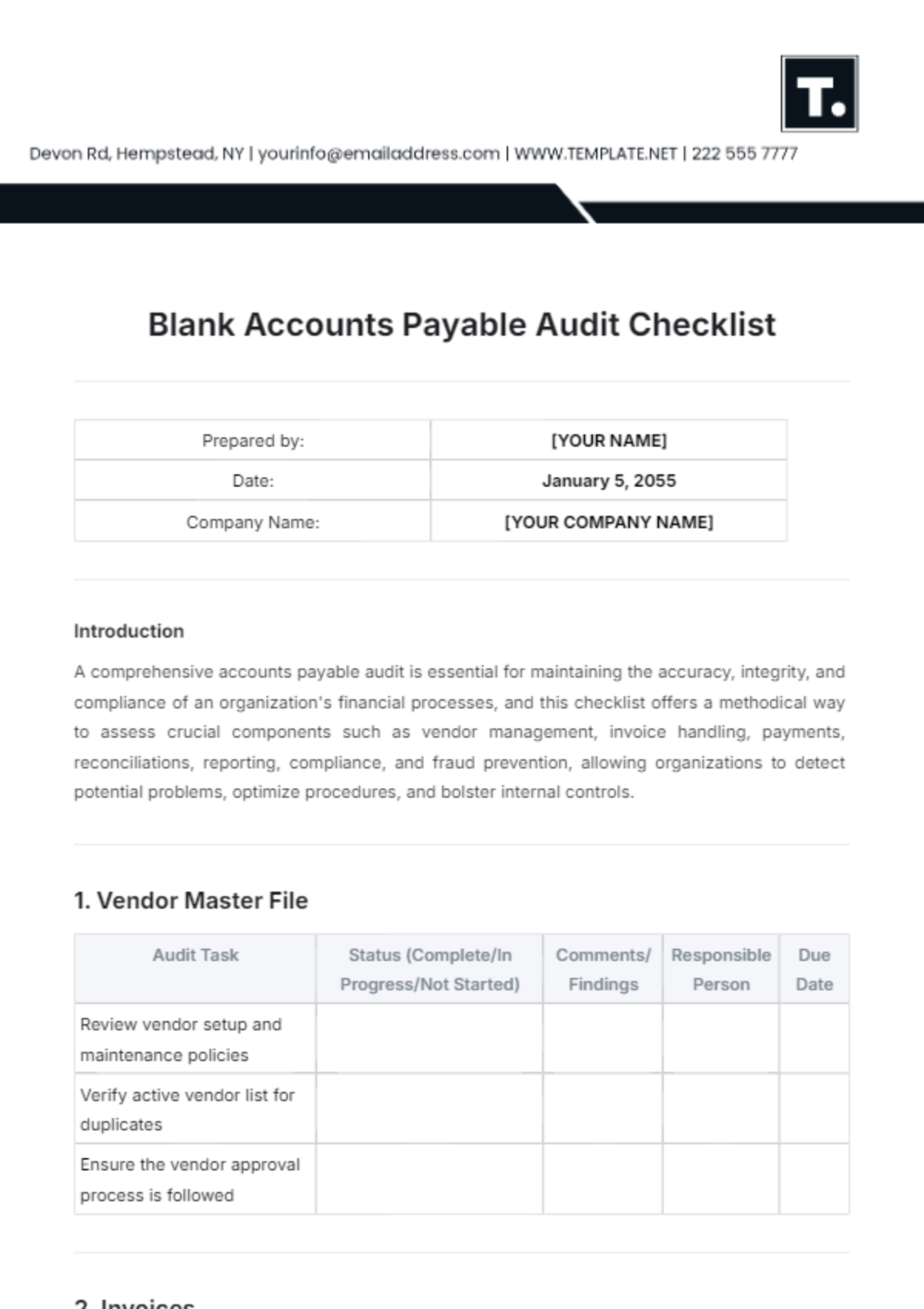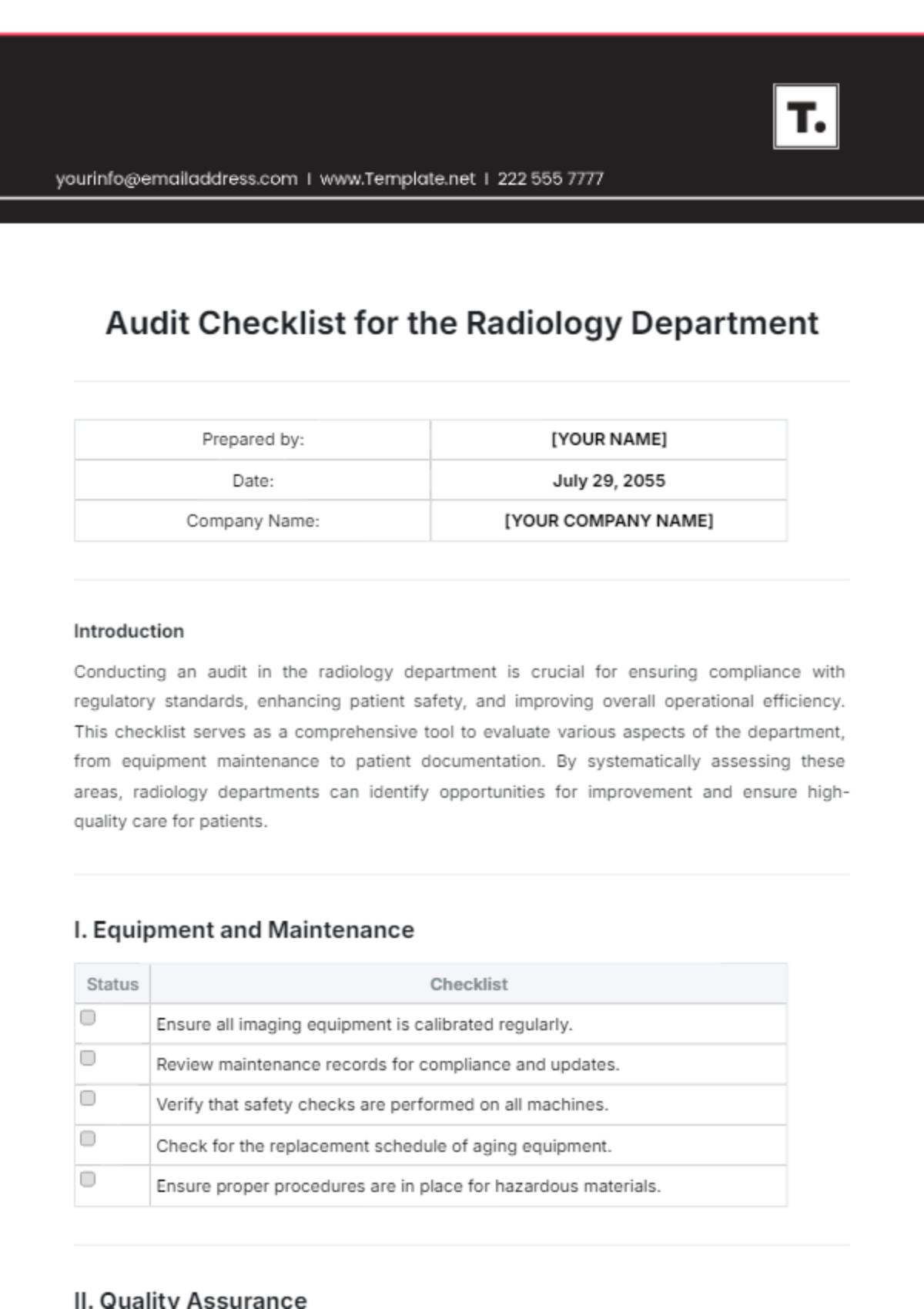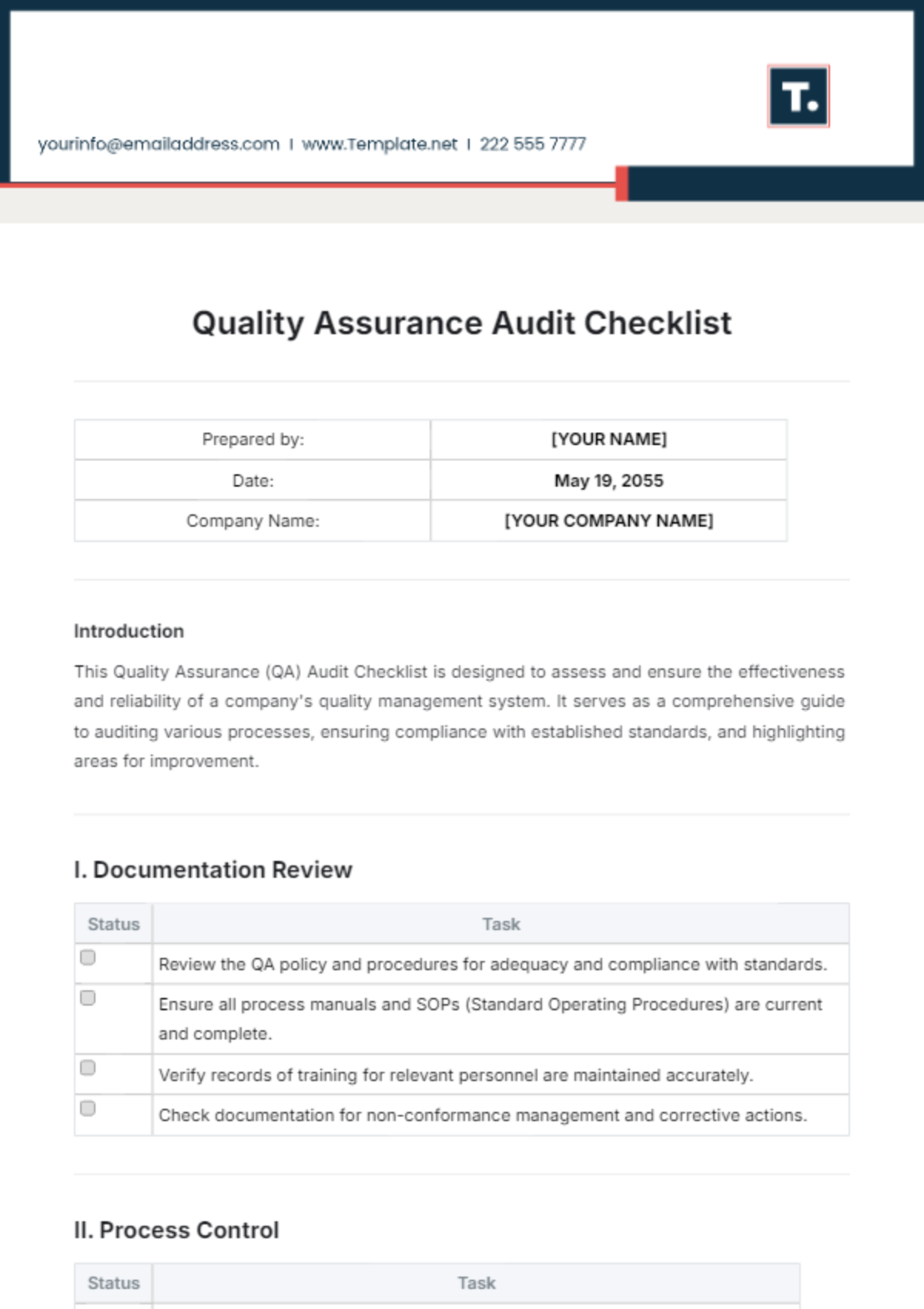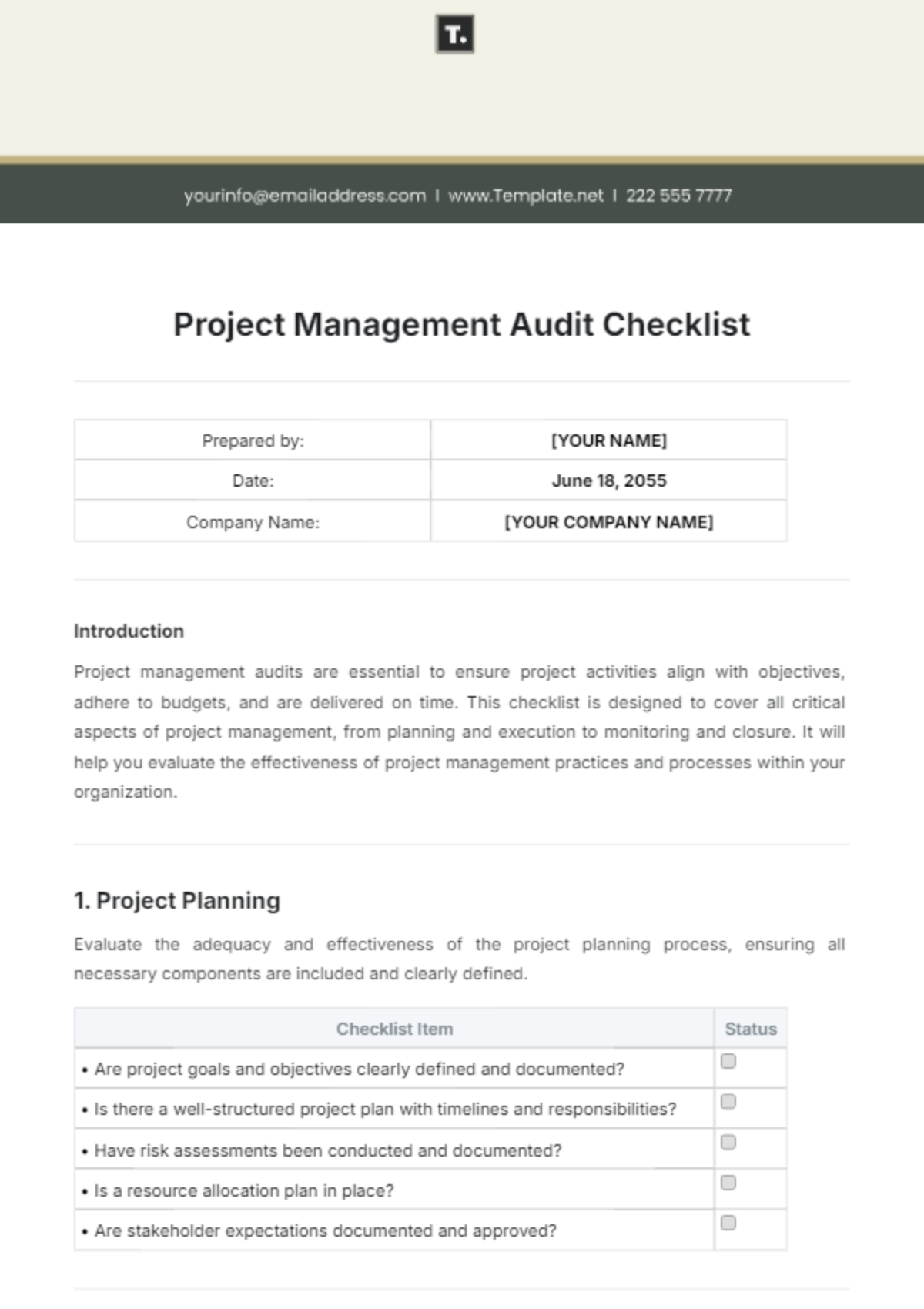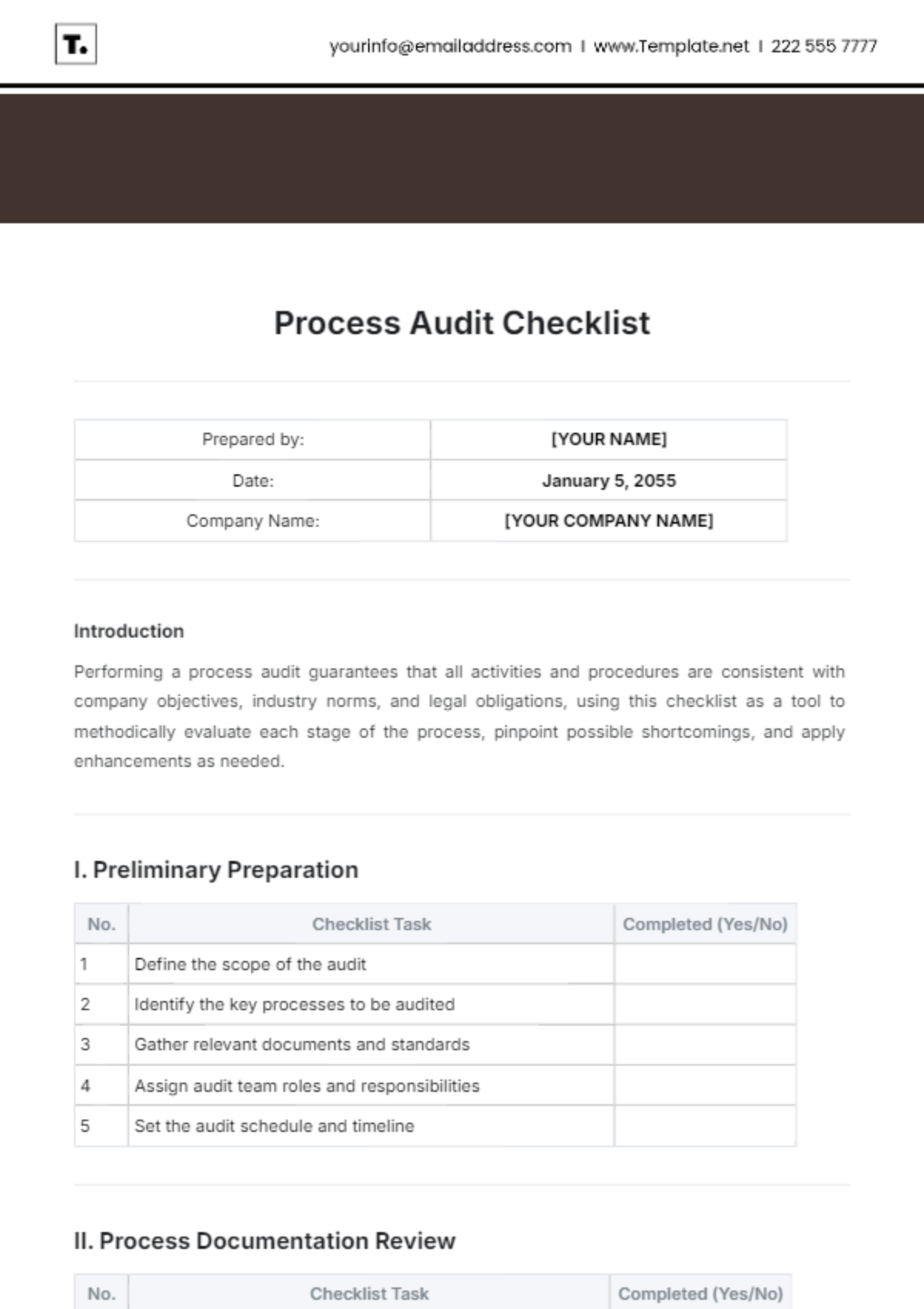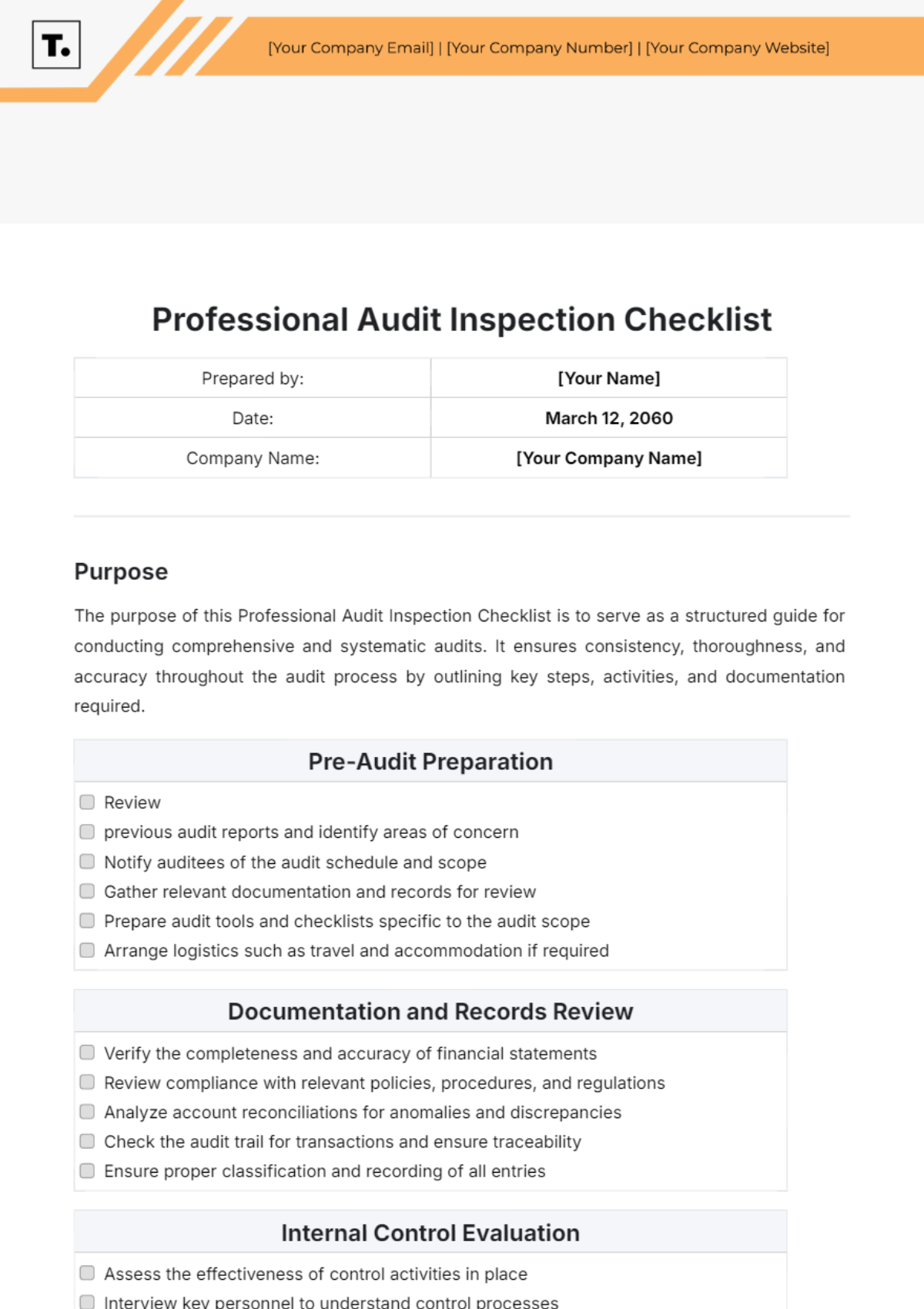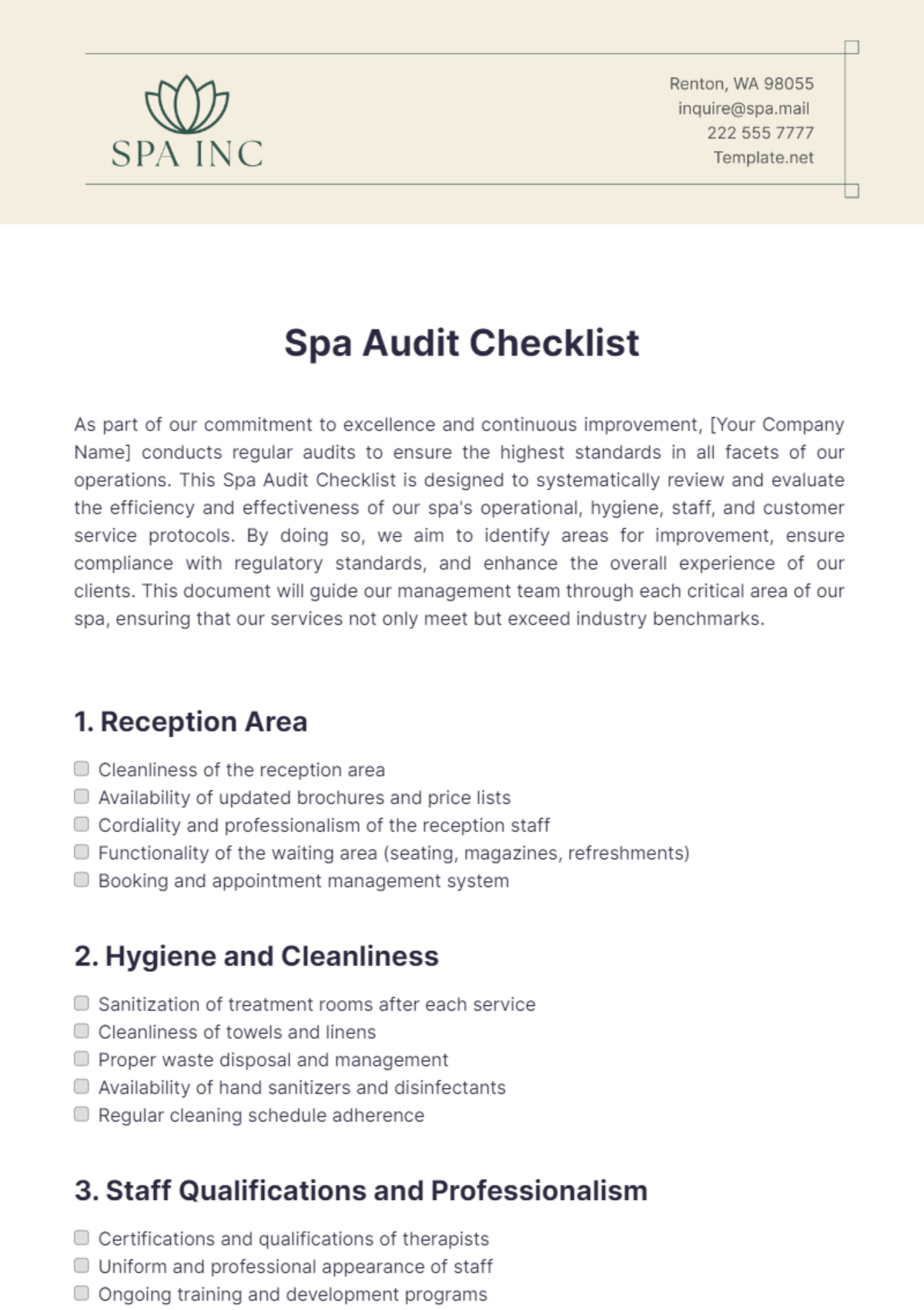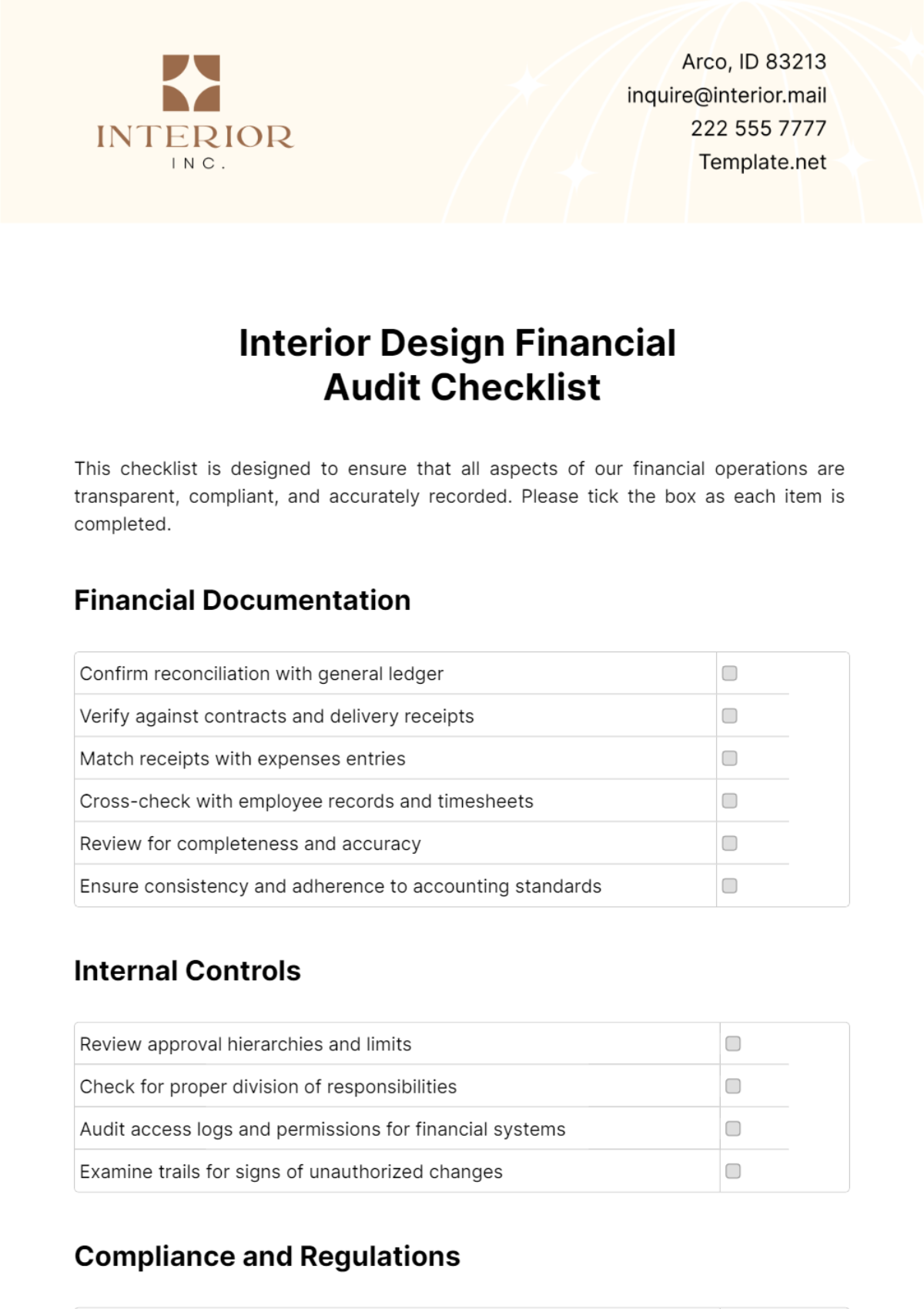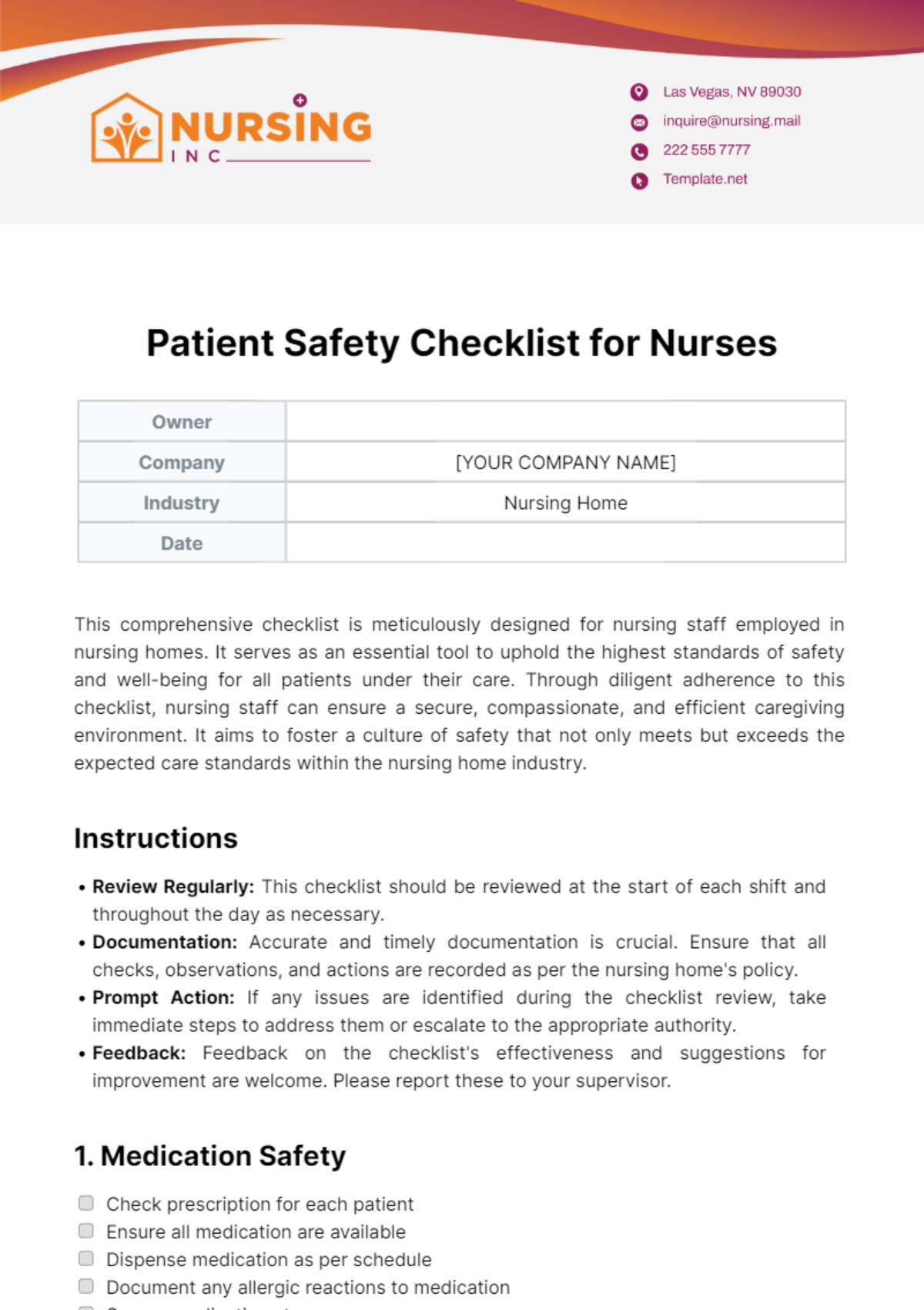In order to examine if the company is conforming to its operational standards, there has to be a comprehensive audit checklist. But drafting one could be a little stressful. Introducing our comprehensively designed audit checklist templates here in Template.net Pro lets you create a detailed checklist to keep track of the business quality standard operation. These templates are available in all file formats including MS Word, Google Docs, and Apple Pages, as well as in A4 and US letter sizes with original suggestive headings. They're also instantly downloadable, editable, and printable for your complete satisfaction and convenience. Hurry and don't miss this chance to make competitive audit checklists! Download now!
What Is an Audit Checklist?
The word audit is defined as the process of inspecting or examining whether the business is conforming to the company's standard operations. A checklist then outlines such standards and whether those items are applicable to the business or not. Check this: how can a business prosper and attract more customers if there is a news report about them not conforming to standard operational standards; perhaps being reported for failing sanitary standards. For this instance, you lose your credibility and might end up decreasing your profit, which is a big NO for all businesses, right? Therefore, there has to be regular inspection checklists and planning; there has to be a detailed outline, as an audit checklist.
How to Create an Audit Checklist?
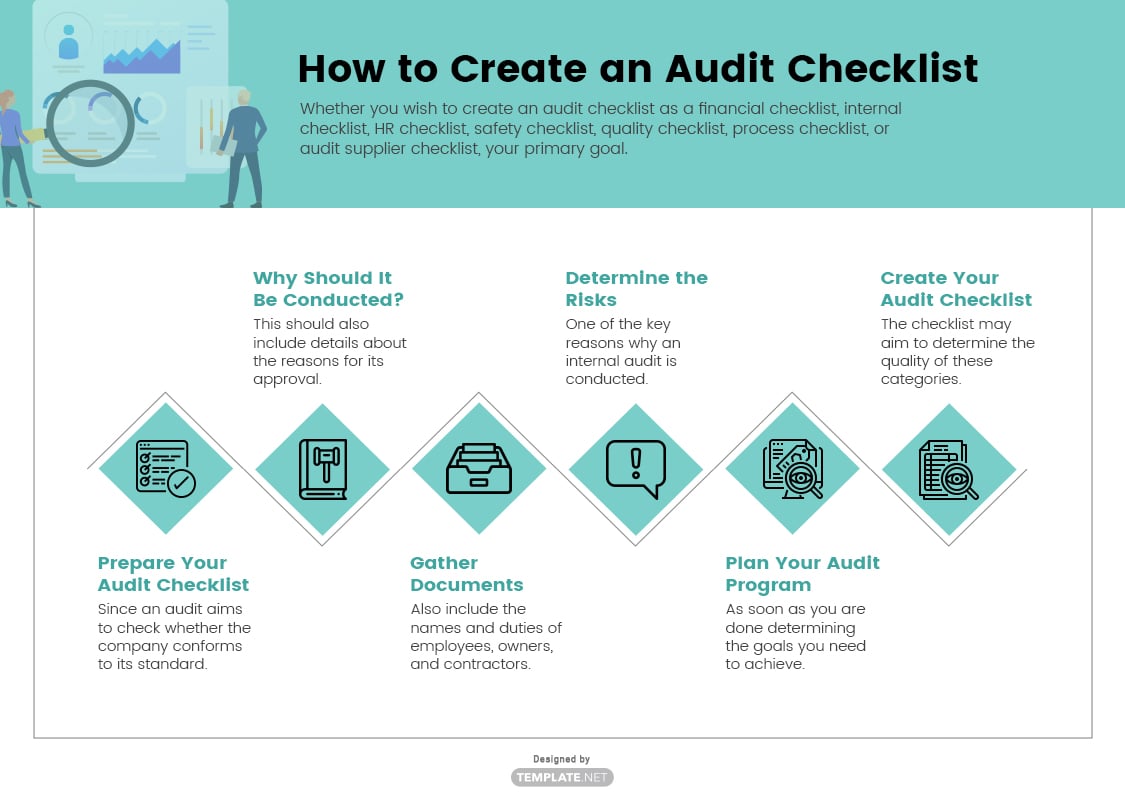
Whether you wish to create an audit checklist as a financial checklist, internal checklist, HR checklist, safety checklist, quality checklist, process checklist, or audit supplier checklist, your primary goal is to identify the most important procedures to take in order to make a standard quality business operation.
1. Prepare Your Audit Checklist
Since an audit aims to check whether the company conforms to its standard operating procedure or not, there has to be a detailed quality checklist on how the audit or inspection will be conducted. First, you should note the sources of the documents that you will use as a basis for conducting an audit. These documents may provide incident reports that may include unstable warehouse, manufacturing errors, etc. and what the recommended solutions provided were, and of course the company policies.
2. Why Should It Be Conducted?
All internal audit reports should give a clear understanding of why it should be conducted. This should also include details about the reasons for its approval, the stakeholder's significant role in achieving its goals and objectives, what the processes are, and how disobedience affects the company.
3. Gather Documents
In order to create a quality audit, you should be able to determine the general information. This includes what your company does. Also include the names and duties of employees, owners, and contractors in your drafting checklist. You should also include tax documents and sales reports and payroll records. In this way, you are able to monitor how company funds were used.
4. Determine the Risks
One of the key reasons why an internal audit checklist form is conducted is to prevent/suppress risks that may occur if the company does not follow its operational standards. These risks may include low productivity because of inefficient manpower, or profit decrease due to manufacturing errors. In addition, your business might be sued by the authorities because of disobedience. In addition to disobedience, this might also affect your customers in some other ways.
5. Plan Your Audit Program
As soon as you are done determining the goals you need to achieve before conducting an audit report, document the process details in a narrative planning checklist for you to easily determine the auditing procedure. The details should include process objectives, process risks, and controls that can mitigate the risks.
6. Create Your Audit Checklist
Indicate your sample checklist header which includes the complete name of the company, logo, address lines, contact details, email address, and URL address. Then, line up your audit checklist and sort them by category. The checklist may aim to determine the quality of these categories namely materials, manufacturing processes, labor, location, etc. Although auditing can be done by an internal entity, this can also be done by the external ones—could be government personnel or outside accreditors.
